Minimalist bedroom design continues to evolve in 2025, embracing warmth, functionality, and sustainable living without sacrificing style. This year's approach moves beyond stark minimalism toward "embracing simplicity with warmth and texture," creating spaces that promote both rest and well-being. Current trends emphasize natural materials, layered lighting, and technology integration that remains invisible yet functional. These bedrooms serve as personal sanctuaries that reflect individual style while maintaining the clean, uncluttered aesthetic that defines minimalist design. From Japandi influences to sustainable materials, today's minimalist bedrooms balance serenity with personality, proving that less truly can be more.
1. Japandi Minimalist Bedroom Fusion
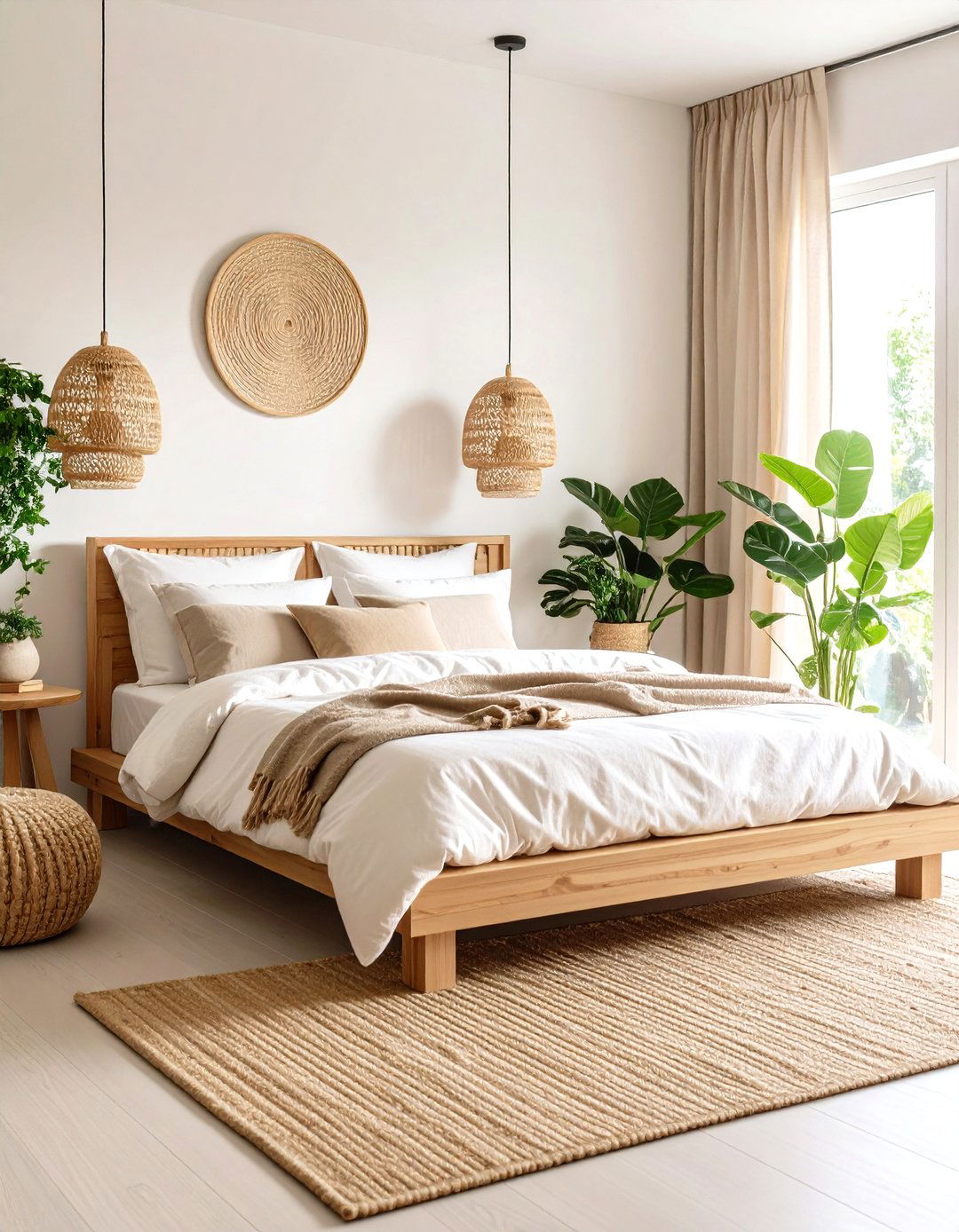
Combining Japanese minimalism with Scandinavian coziness, the Japandi minimalist bedroom creates a harmonious blend of clean lines and natural warmth. This design features low-profile platform beds crafted from light oak or ash, complemented by neutral linen bedding in soft whites and beiges. Natural fiber rugs made from jute or wool anchor the space, while bamboo or ceramic accessories add subtle texture without visual clutter. The color palette emphasizes earthy neutrals with warm wood tones, creating a grounding effect that promotes tranquility. Strategic placement of indoor plants like fiddle leaf figs or bonsai trees brings life to the space. This fusion style captures the heart of both design philosophies through functionality, simplicity, and natural elements.
2. Warm Neutral Minimalist Bedroom Retreat
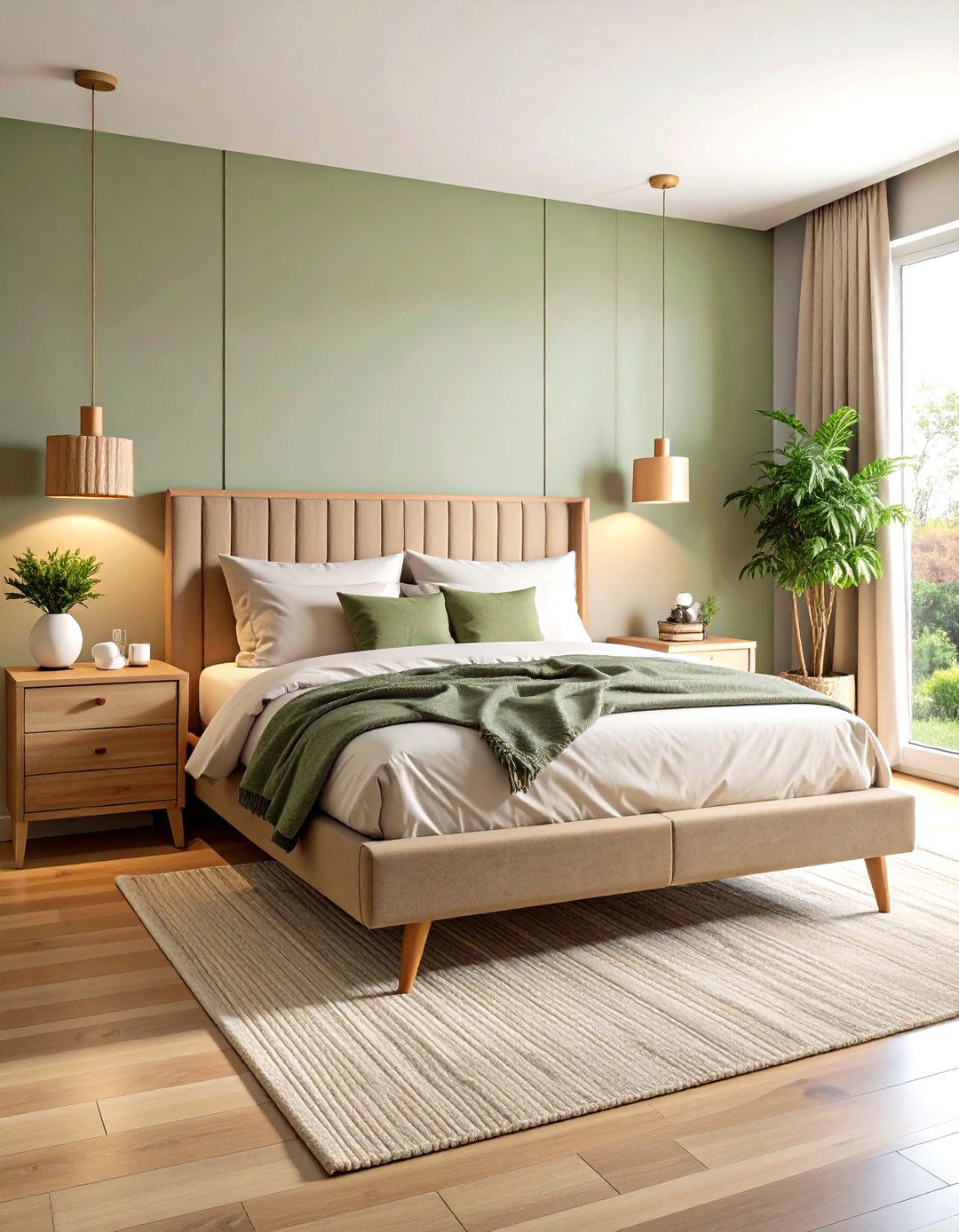
Embracing the 2025 trend toward warmer neutrals, this minimalist bedroom uses beige, taupe, and greige as foundational colors. The space features a upholstered platform bed in soft taupe fabric, paired with organic cotton bedding in cream and warm white tones. Textured wall treatments like limewash or natural plaster add depth without overwhelming the senses. Furniture pieces include a simple wooden nightstand in light oak and a minimalist dresser with clean geometric lines. Layered lighting combines recessed ceiling fixtures with warm LED bedside lamps, creating a cozy atmosphere. Natural materials like wool throws and linen curtains introduce softness while maintaining the uncluttered aesthetic. This approach proves that minimalism doesn't require stark coldness to achieve sophistication.
3. Sustainable Minimalist Bedroom Sanctuary
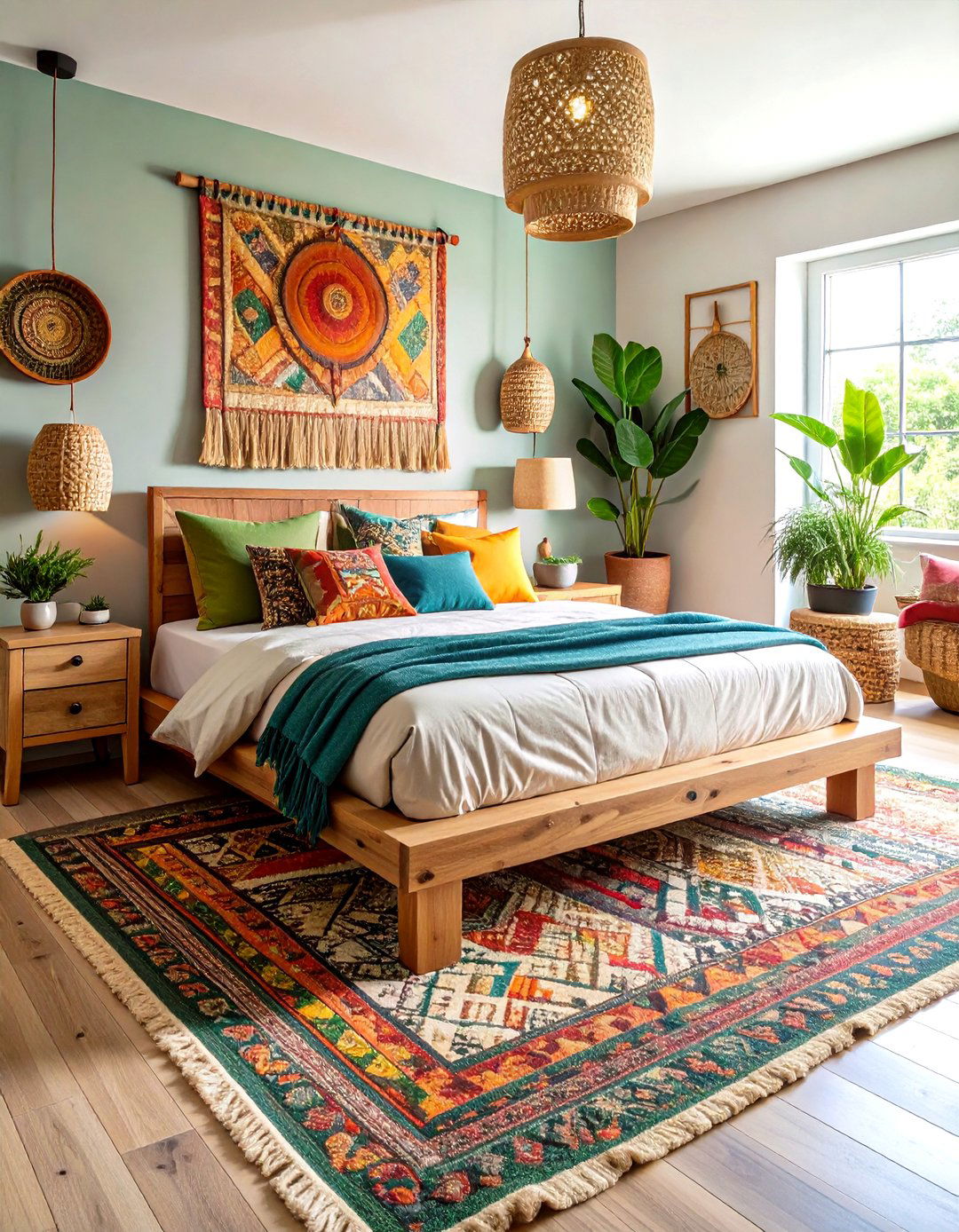
Prioritizing environmental consciousness, this minimalist bedroom showcases reclaimed wood furniture and organic materials throughout the design. The emphasis on sustainability means using eco-friendly materials and processes, including reclaimed wood furniture, organic cotton bedding, and non-toxic paints. The centerpiece features a platform bed crafted from reclaimed teak or barn wood, complemented by bedding made from certified organic cotton and linen. Storage solutions utilize bamboo organizers and recycled metal hardware. Energy-efficient LED lighting with warm color temperatures creates ambiance while reducing environmental impact. Natural fiber rugs made from organic wool or recycled materials define the sleeping area. The color palette emphasizes earth tones that reflect natural materials, creating a space that feels both responsible and restorative.
4. Platform Storage Minimalist Bedroom Design
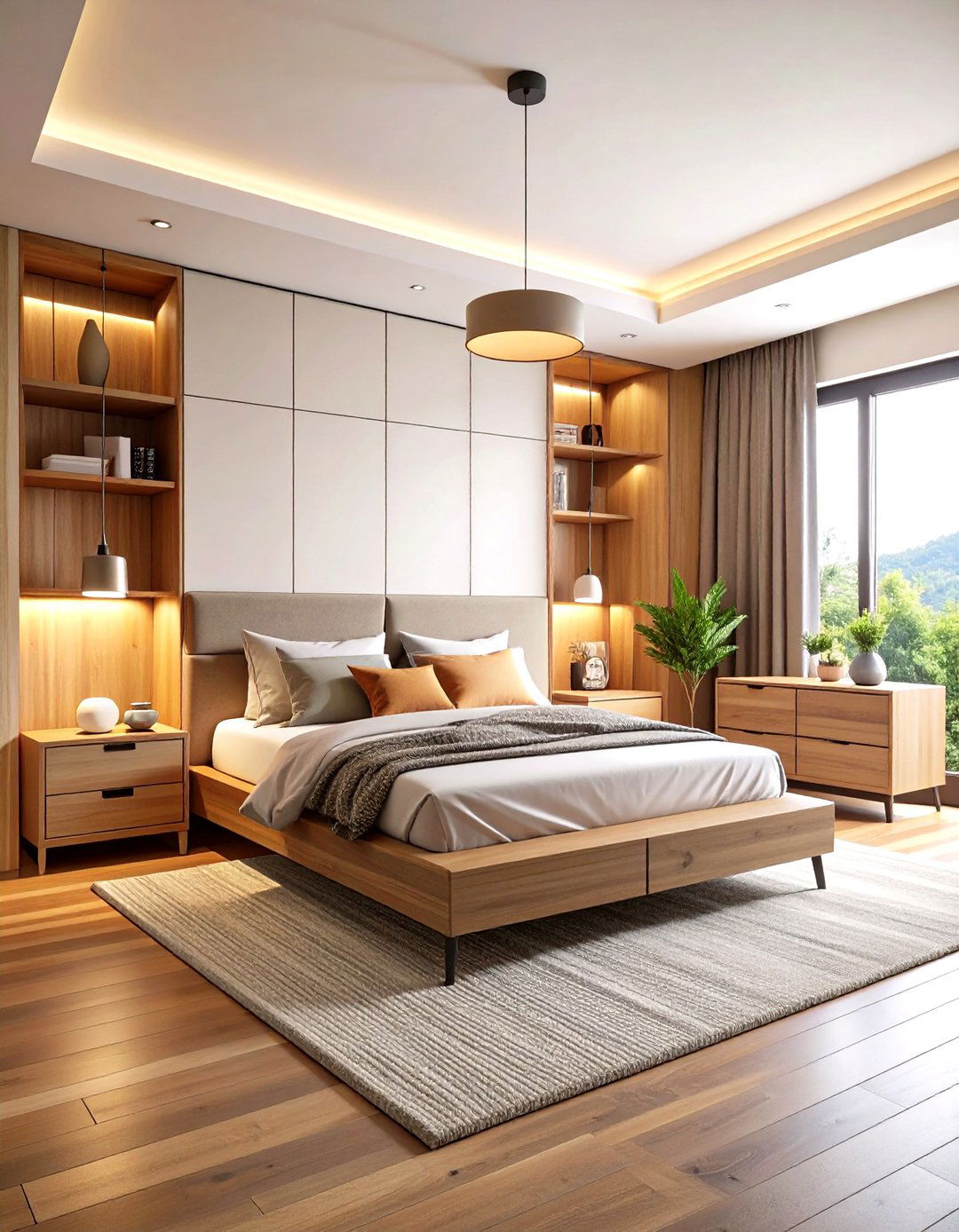
Maximizing functionality through hidden storage, this minimalist bedroom centers around a platform bed with integrated drawers beneath the sleeping surface. The clean-lined bed frame features slide-out compartments perfect for storing bedding, clothing, and personal items while maintaining visual simplicity. Floating nightstands mounted to the wall eliminate floor clutter and create an airy feel. Built-in closet systems with flush doors maintain seamless wall surfaces, while modular storage cubes serve dual purposes as seating and organization. The design emphasizes smooth surfaces and concealed storage to support the minimalist aesthetic. Neutral colors in whites and light grays reflect light and enhance the sense of spaciousness. This approach proves that minimalism and practicality can coexist beautifully.
5. Monochromatic Minimalist Bedroom Serenity
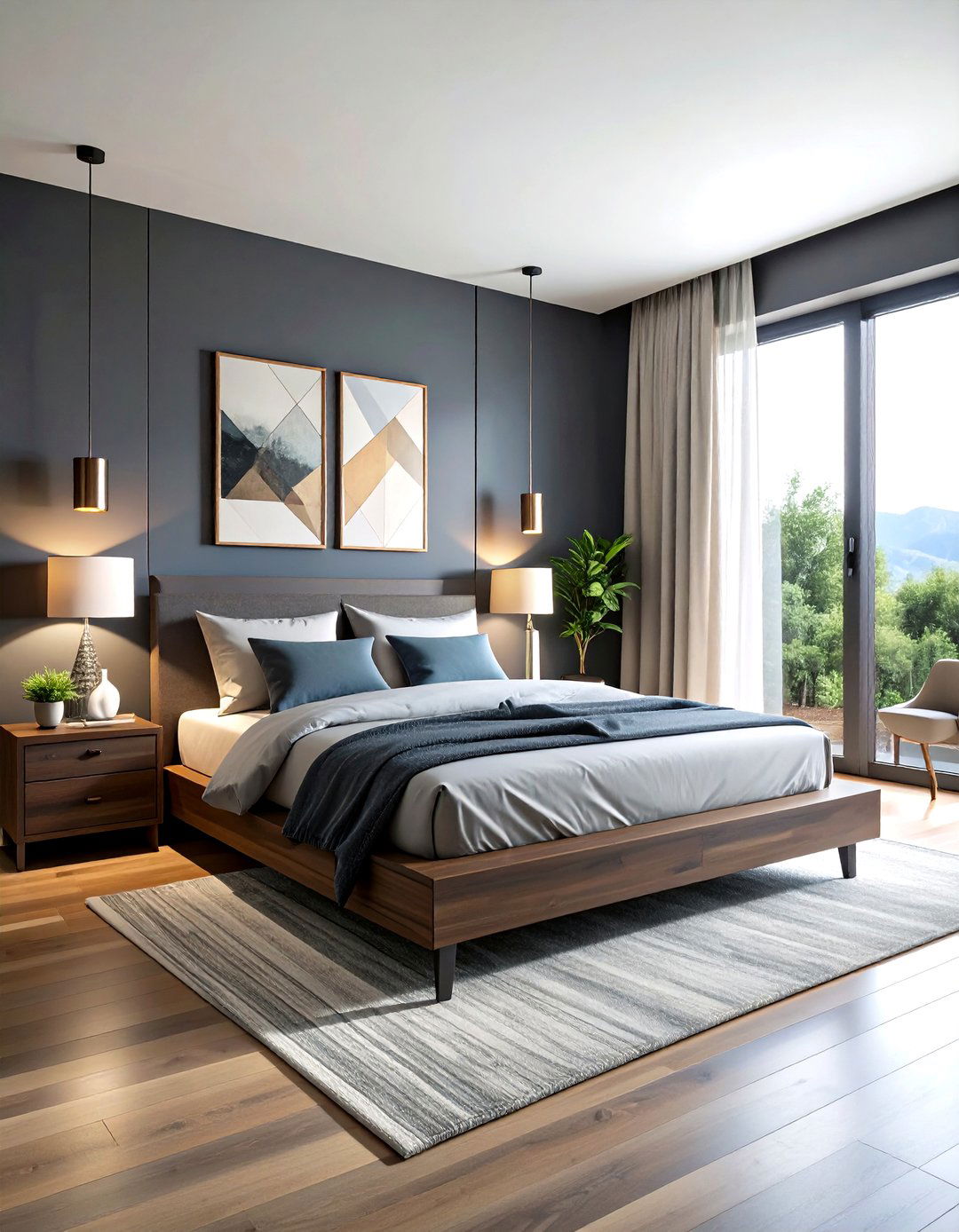
Creating depth through varying shades of a single color, this minimalist bedroom employs a sophisticated monochromatic approach. Using different shades and tints of the same color creates depth and interest, such as a palette of soft grays with accents in darker and lighter shades. The design features charcoal walls paired with lighter gray bedding and silvery accent pieces. Texture becomes crucial in preventing monotony, achieved through materials like brushed cotton, wool knits, and matte metal finishes. A low platform bed in dark walnut provides grounding, while sheer curtains in pearl gray filter natural light softly. Geometric artwork in subtle tonal variations adds visual interest without introducing competing colors. The result is a cocoon-like environment that promotes deep relaxation and restful sleep.
6. Natural Light Minimalist Bedroom Oasis
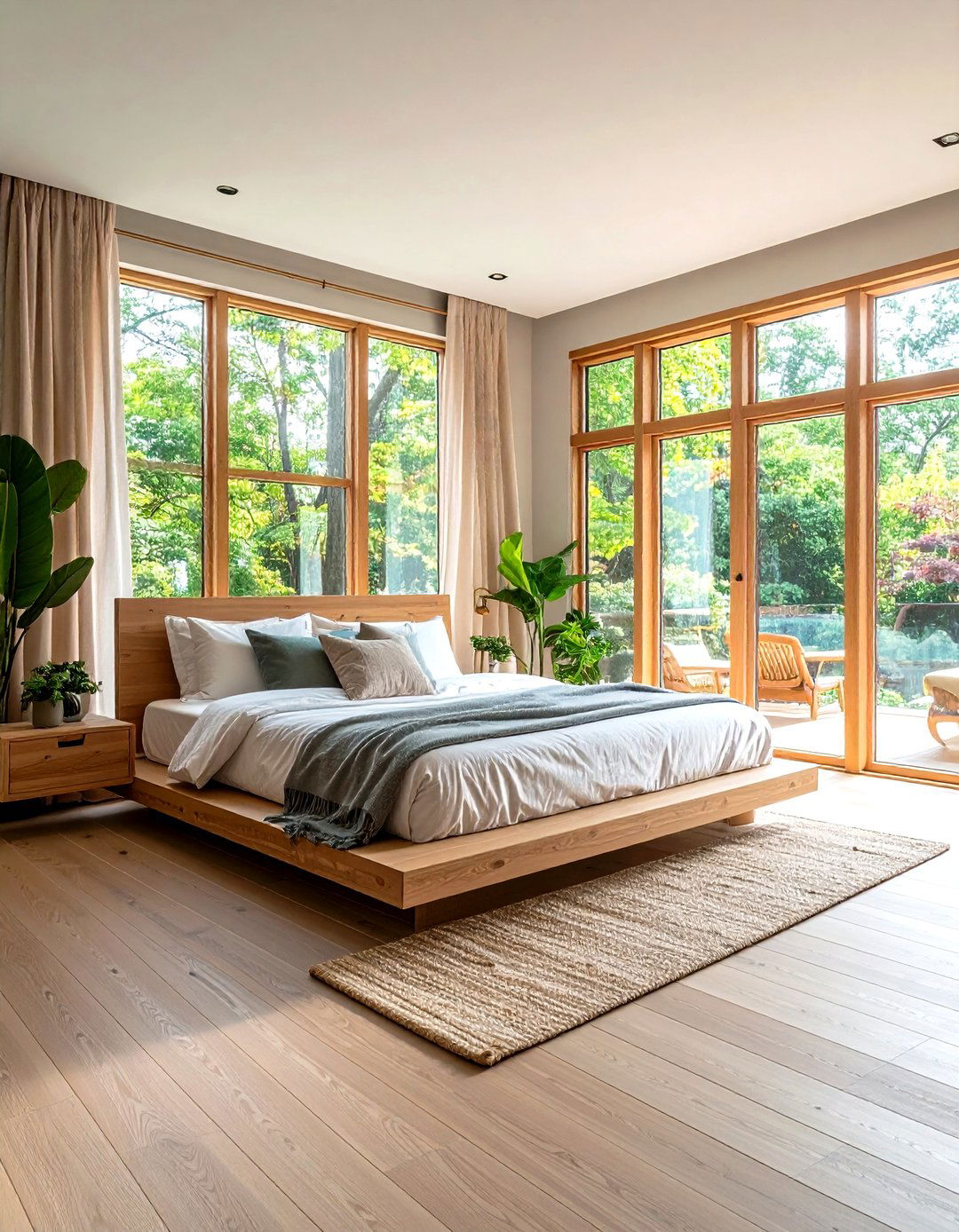
Maximizing natural illumination, this minimalist bedroom design centers around large windows and strategic light reflection techniques. Natural lighting not only improves mood and wellbeing but can make a room feel cozier and larger, especially when combined with airy paint colors. Floor-to-ceiling windows remain unobstructed or feature minimal sheer treatments that preserve privacy while allowing maximum light penetration. Strategically placed mirrors amplify and redirect sunlight throughout the space. The color palette emphasizes light-reflecting whites and pale creams on walls and bedding. A simple platform bed with white oak frame complements light wooden flooring, creating seamless visual flow. Minimal furniture placement ensures shadows don't interrupt the light distribution. This design celebrates the beauty of natural illumination as both functional element and artistic feature.
7. Textural Minimalist Bedroom Warmth
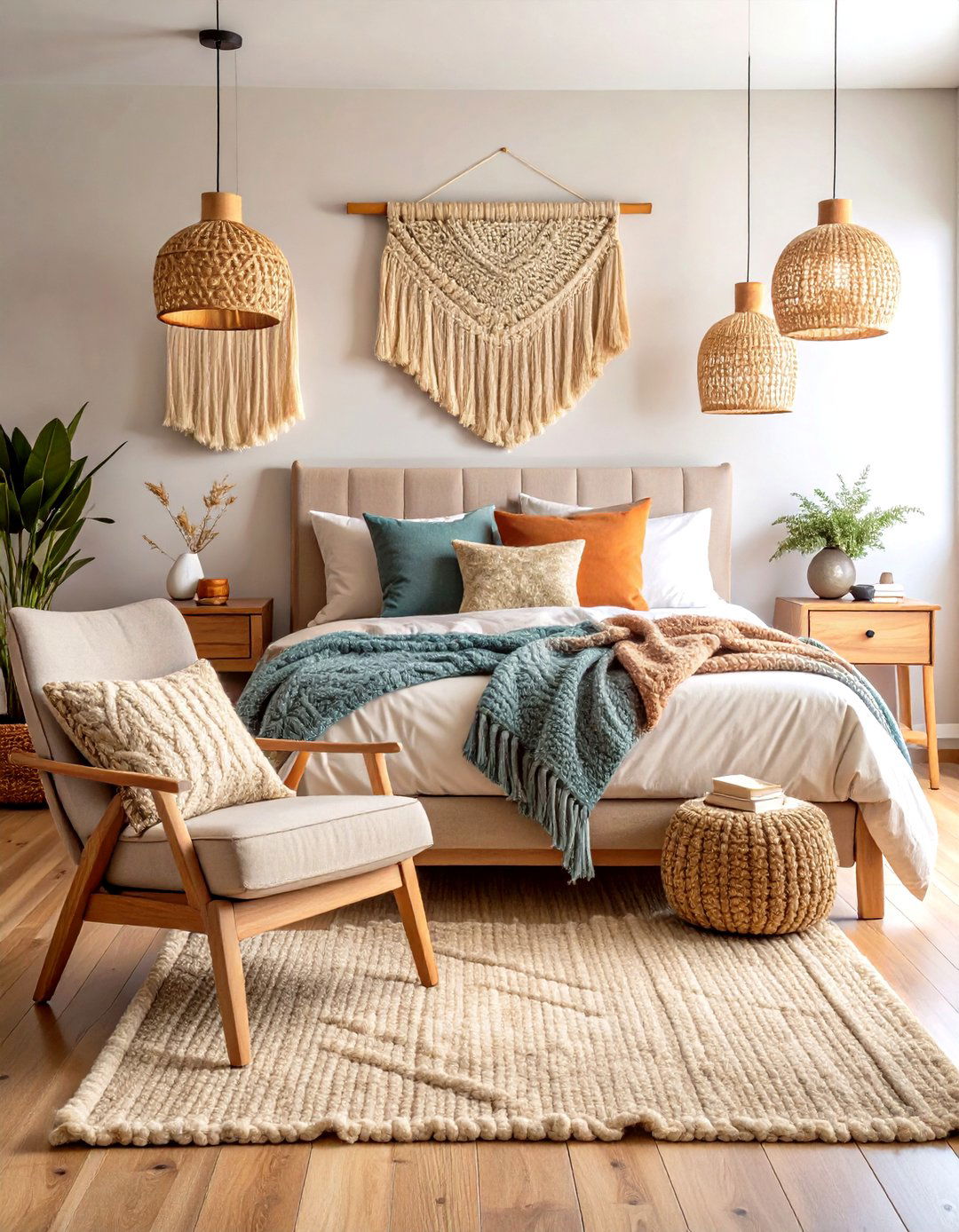
Adding warmth through layered textures while maintaining simplicity, this minimalist bedroom proves that minimal doesn't mean stark. The design incorporates various natural textures through materials like bouclé accent chairs, chunky knit throws, and woven wall hangings. A platform bed features an upholstered headboard in natural linen, while bedding combines smooth cotton with textured wool elements. Walls may feature subtle wood paneling or textured paint treatments that add dimension without pattern complexity. Natural fiber rugs in different weaves create zones within the space. The color palette remains neutral, allowing texture to provide visual and tactile interest. Lighting includes warm wood pendant lights and table lamps with fabric shades, enhancing the cozy atmosphere while maintaining clean design lines.
8. Technology-Integrated Minimalist Bedroom Innovation
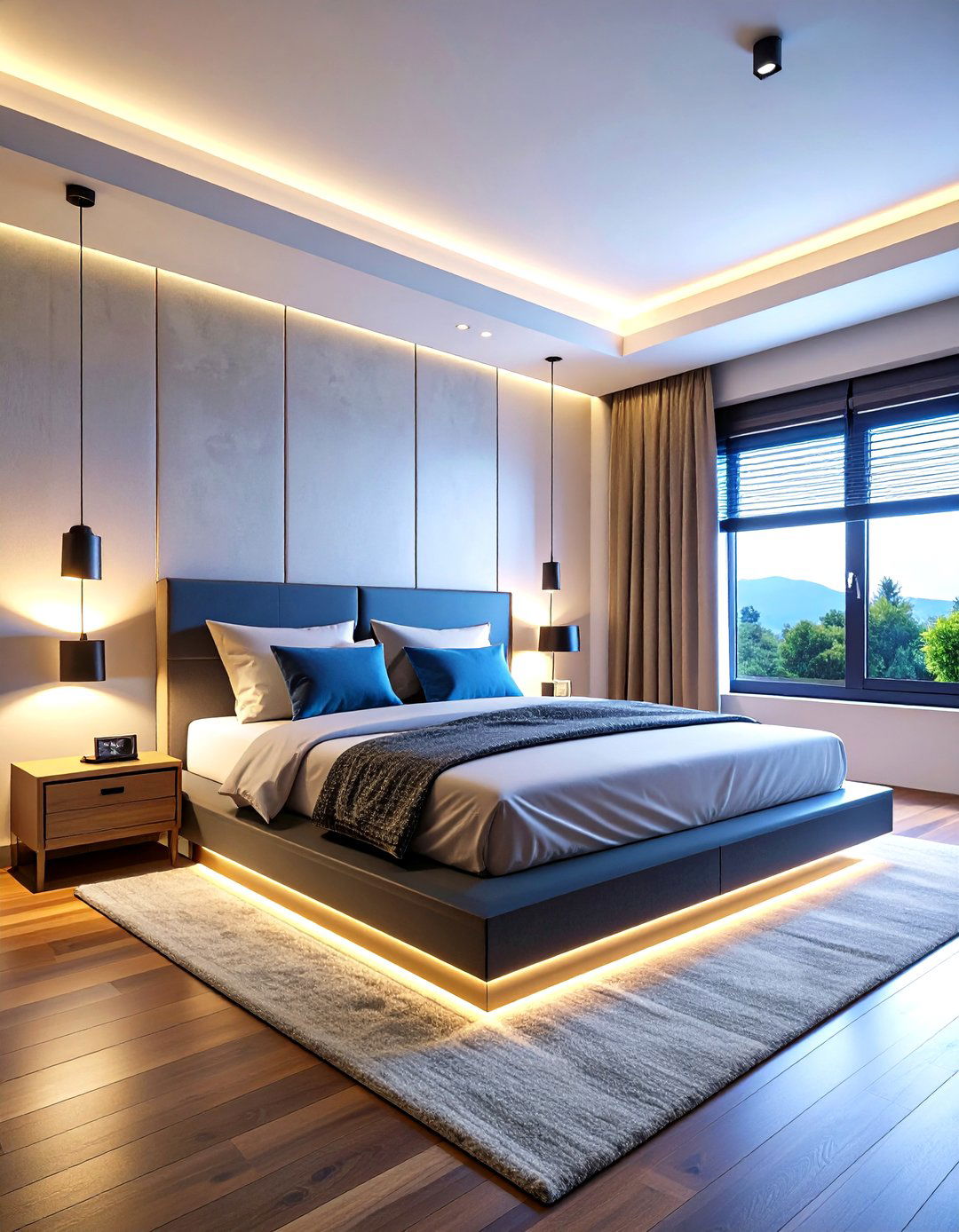
Embracing invisible technology integration, this minimalist bedroom features hidden speakers, under-bed lighting, and concealed charging stations that enhance functionality without disrupting aesthetics. The platform bed includes built-in USB ports and wireless charging surfaces seamlessly integrated into the frame design. Smart lighting systems respond to circadian rhythms while maintaining minimal fixture profiles. Automated blackout shades operate silently without visible hardware, controlled through voice commands or smartphone apps. Climate control integration ensures optimal sleeping temperatures through nearly invisible vent systems. All cables and electronic components remain completely hidden within furniture and wall systems. The result is a high-tech sleeping environment that appears completely serene and uncluttered, proving that modern convenience and minimalist aesthetics can coexist harmoniously.
9. Low-Profile Minimalist Bedroom Zen
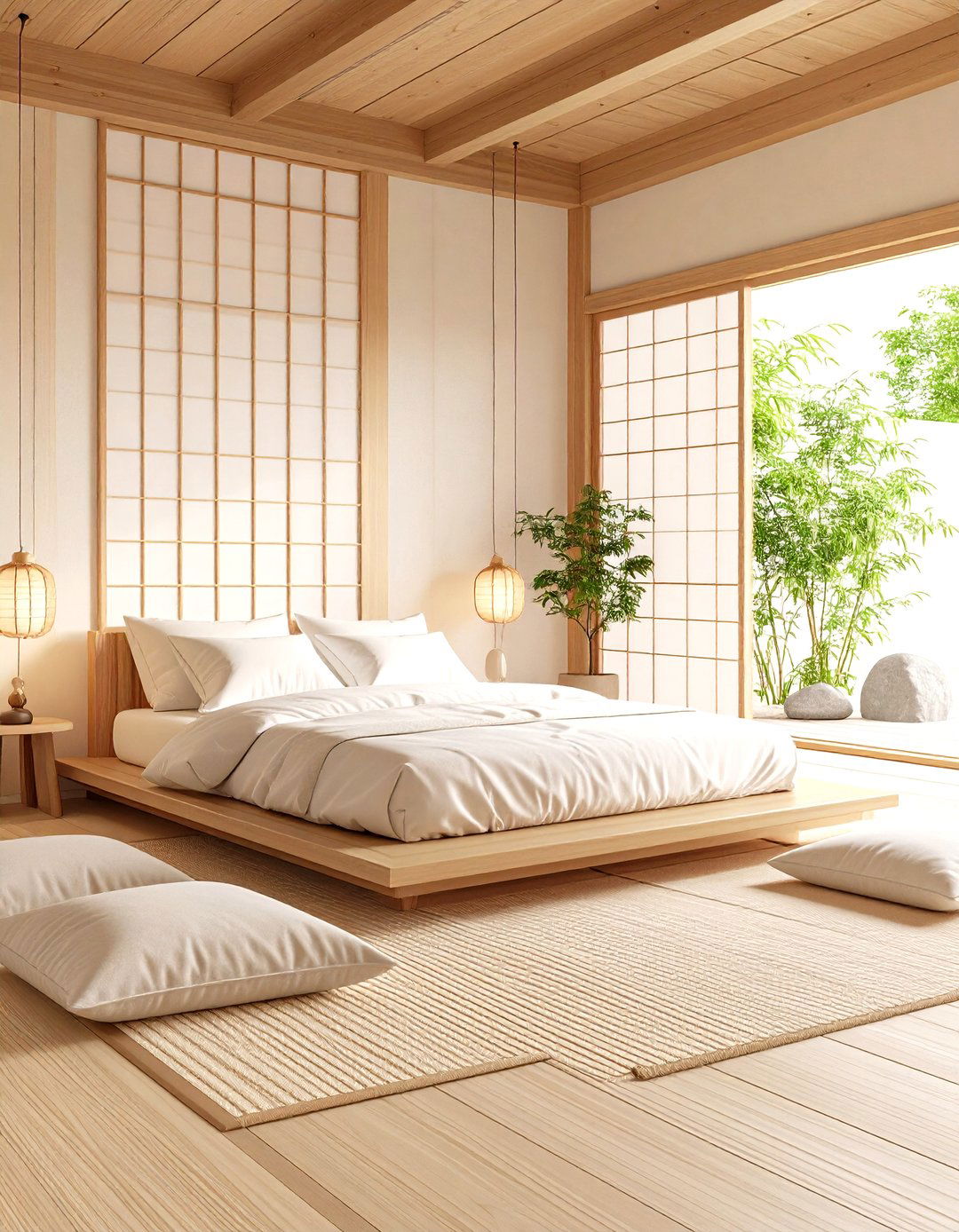
Emphasizing horizontal lines and floor-level living, this minimalist bedroom draws inspiration from traditional Japanese sleeping arrangements. Low-level beds make a bedroom feel more spacious, stay cooler as hot air rises, and are easier to climb into. The design features a floor-level platform bed or elevated tatami mat system that creates intimate sleeping zones. Furniture pieces maintain low profiles, including bedside tables that sit just inches above the sleeping surface. Floor cushions provide seating options that can be stored away when not needed. The ceiling height appears to expand through this ground-level approach, creating a sense of openness and calm. Natural materials like bamboo, untreated wood, and organic cotton emphasize the connection to earth elements. This design promotes mindfulness and tranquility through its deliberate simplicity.
10. Floating Furniture Minimalist Bedroom Elegance

Creating visual lightness through suspended design elements, this minimalist bedroom features wall-mounted furniture that appears to float above the floor. Floating nightstands mount directly to the wall, eliminating the need for legs and creating a clean, modern look while providing essential surface space. The platform bed frame includes a subtle lighting strip beneath, creating the illusion of levitation. Wall-mounted desks and shelving systems maintain clean floor lines while providing necessary functionality. Built-in storage appears seamlessly integrated into wall systems, maintaining smooth surfaces. The absence of visible furniture legs creates uninterrupted floor flow, making the space appear larger and more serene. Lighting fixtures also employ floating principles, with pendant lights and wall sconces that seem to hover without visible mounting hardware.
11. Earth-Tone Minimalist Bedroom Grounding
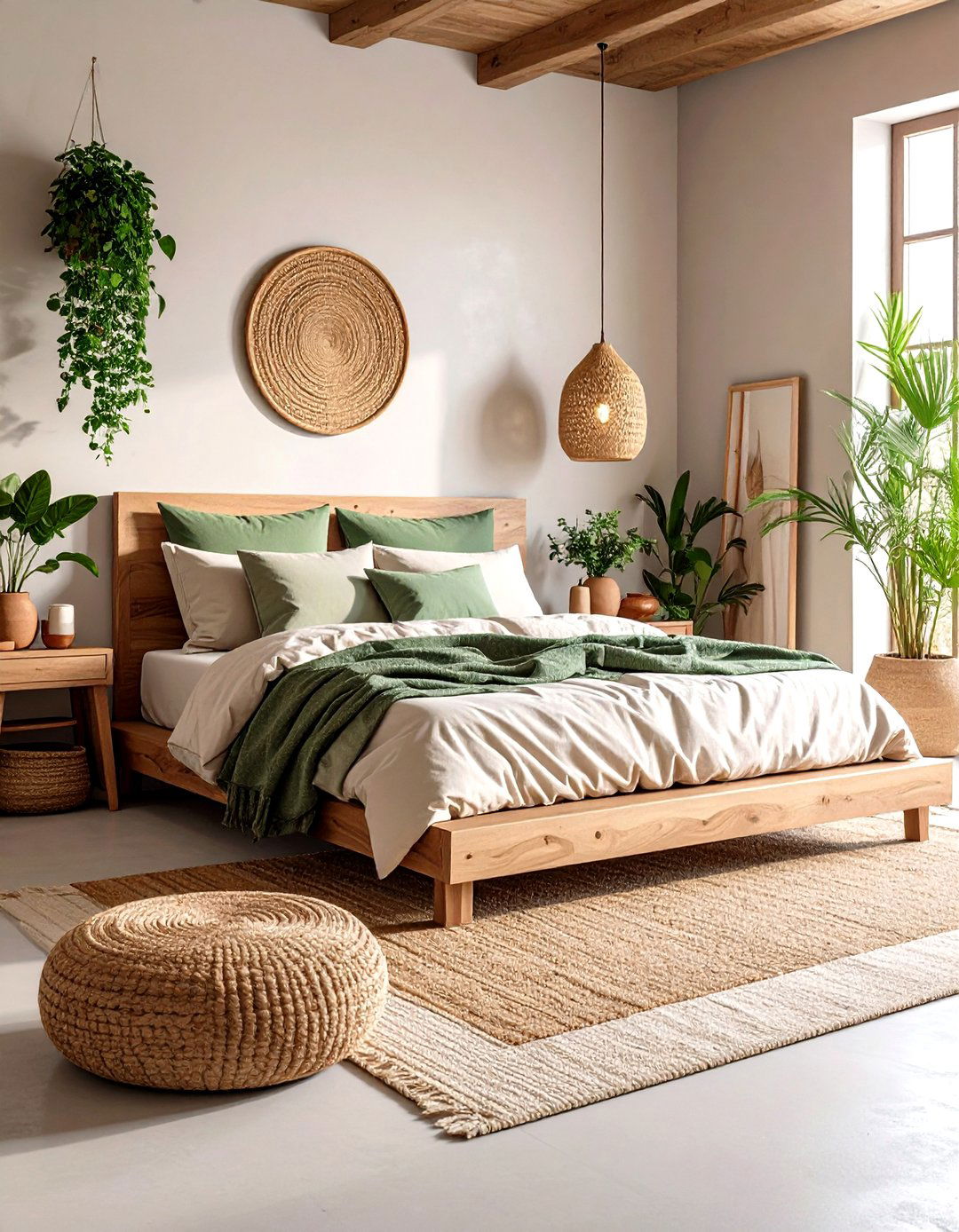
Incorporating natural earth tones like sage green and terracotta, this minimalist bedroom creates a connection to nature that promotes feelings of stability and grounding. The color palette draws from natural landscapes, featuring warm sand, clay, and stone hues on walls and textiles. A platform bed in natural walnut provides rich wood tones, while bedding combines organic cotton in sage and cream colors. Terra cotta accent pieces and pottery add warmth without clutter. Natural fiber rugs in earthy browns anchor the space, while plants in ceramic planters bring living elements indoors. The design balances warm and cool earth tones to create a nurturing environment that feels both sophisticated and deeply relaxing. This approach demonstrates how color can ground a space while maintaining minimalist principles.
12. Modular Minimalist Bedroom Adaptability
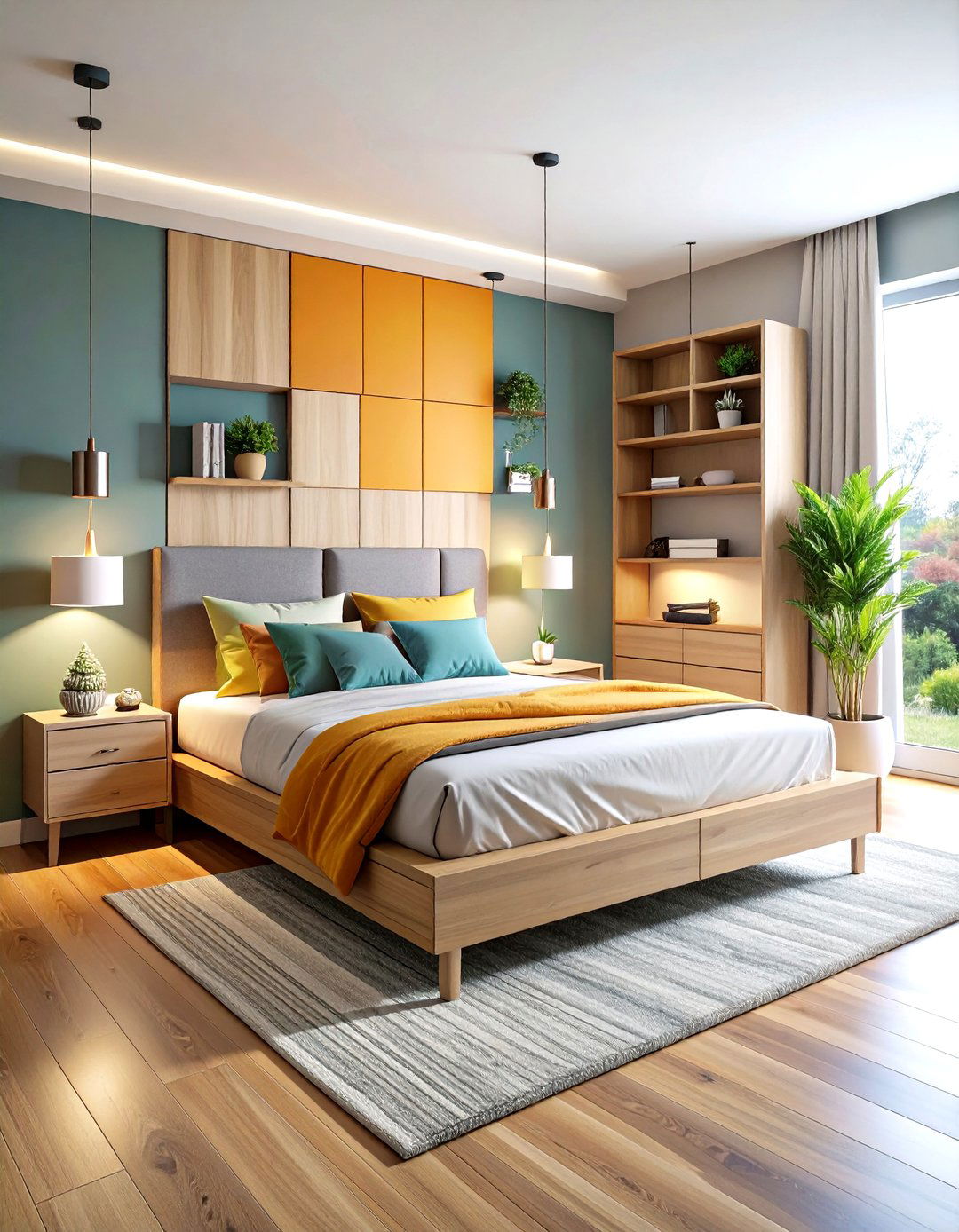
Featuring customizable modular design that offers flexibility and personalization within a minimalist framework, this bedroom adapts to changing needs while maintaining aesthetic coherence. The bed frame system allows for size adjustments through removable panels, growing from twin to king configurations as needed. Modular storage cubes can be rearranged to create different functional zones, serving as nightstands, seating, or display areas. Wall-mounted shelving systems feature adjustable components that accommodate various storage requirements. Even lighting elements follow modular principles, with track systems that allow repositioning of fixtures. The furniture pieces coordinate through consistent materials and finishes while offering maximum flexibility. This design philosophy supports long-term use and evolving lifestyle needs without requiring complete room redesigns, making it both sustainable and practical.
13. Soft Minimalist Bedroom Comfort
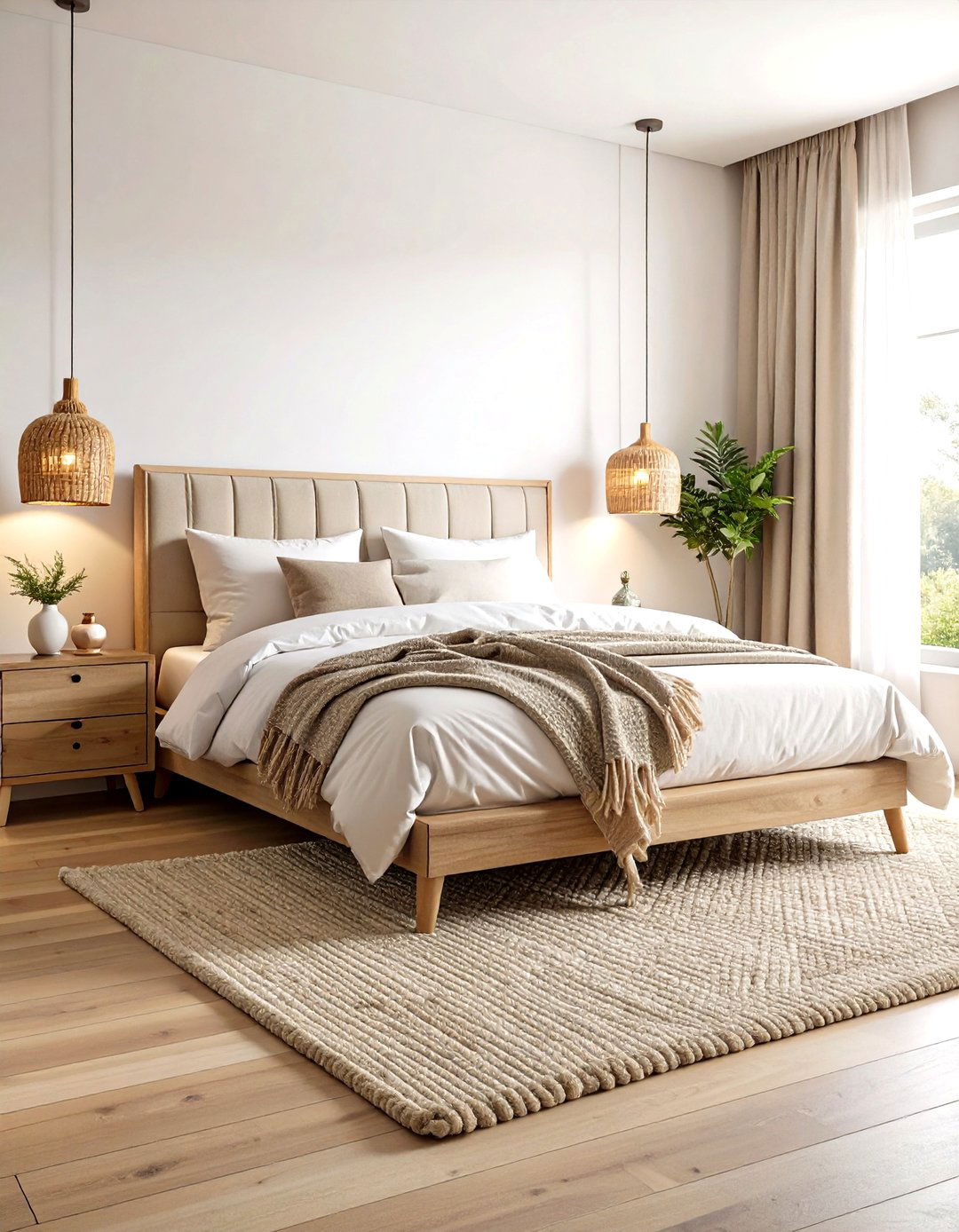
Balancing minimalist principles with luxurious comfort, this bedroom emphasizes plush textures and soft materials without sacrificing clean design. The design focuses on quality over quantity, ensuring every element serves both aesthetic and comfort purposes. An upholstered platform bed features a generously padded headboard in soft wool or linen fabric. Layer upon layer of high-quality bedding includes Egyptian cotton sheets, cashmere throws, and down pillows in neutral tones. A plush area rug in natural wool provides warmth underfoot, while blackout curtains in soft fabrics ensure quality sleep. Furniture pieces feature rounded edges and soft surfaces, eliminating harsh angles. The overall effect creates a cocoon-like environment that invites relaxation while maintaining the visual simplicity characteristic of minimalist design.
14. Industrial Minimalist Bedroom Edge
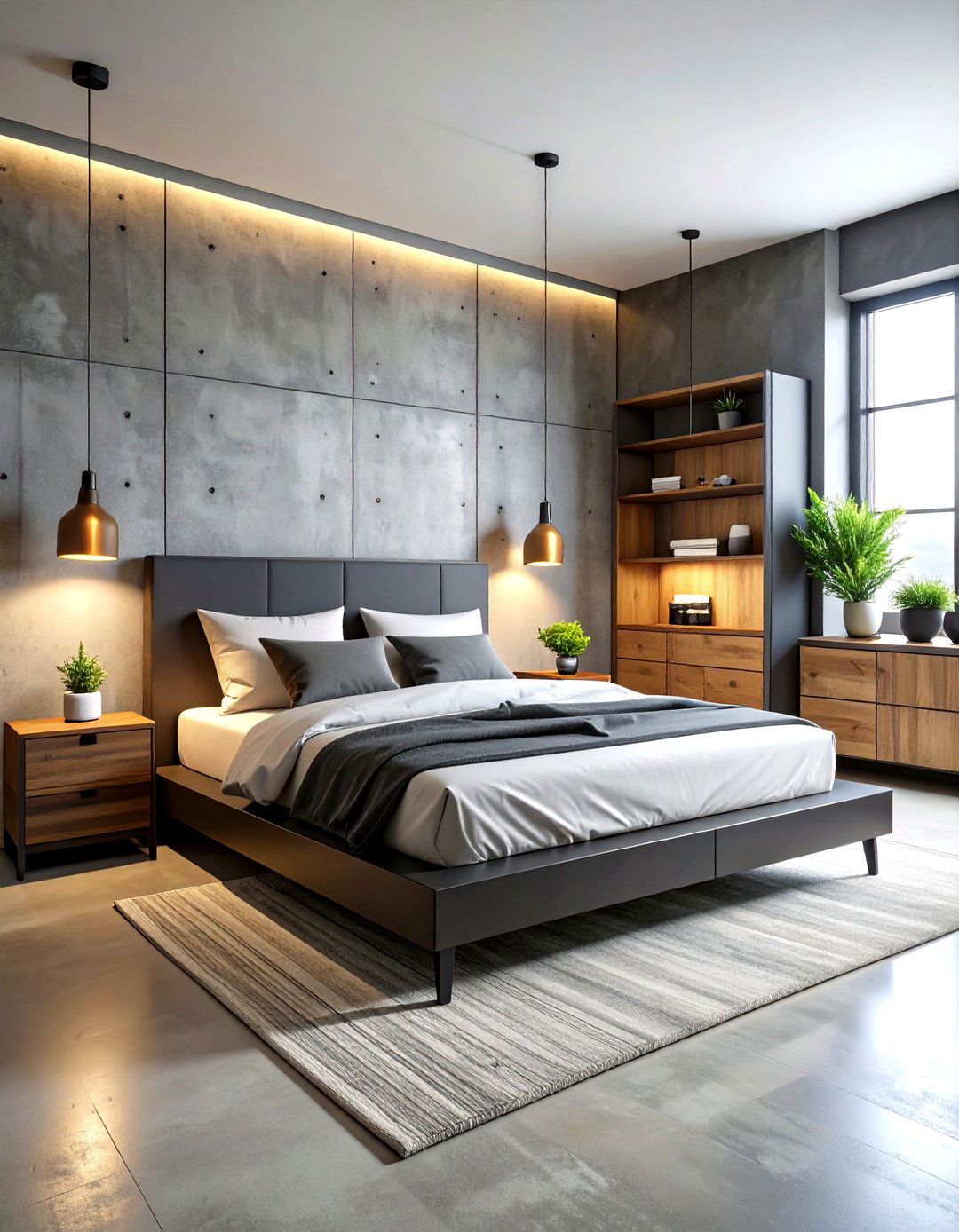
Combining raw materials with clean lines, this minimalist bedroom incorporates industrial elements like exposed steel and concrete while maintaining serene functionality. The design features a platform bed with a sleek metal frame in matte black or brushed steel, paired with crisp white bedding for contrast. Concrete accent walls or floors provide textural interest without pattern complexity. Industrial lighting fixtures, such as simple pendant lights or track systems, offer both function and visual appeal. Storage solutions utilize metal and wood combinations, featuring clean geometric forms. The color palette emphasizes neutrals with metallic accents, creating sophistication without coldness. Natural elements like wood and plants soften the industrial edge, proving that minimalism can embrace urban aesthetics while remaining warm and inviting for rest and relaxation.
15. Curved Minimalist Bedroom Softness

Introducing organic shapes and curved elements, this minimalist bedroom softens traditional angular minimalism while maintaining clean, uncluttered aesthetics. The design features a platform bed with gently rounded corners and a curved headboard that creates visual flow. Pendant lighting fixtures showcase organic shapes, such as spherical or teardrop forms in natural materials. Furniture pieces incorporate subtle curves, from rounded nightstands to organically shaped mirrors. Even storage solutions feature soft edges and flowing forms that feel less institutional than traditional minimalist designs. The color palette remains neutral but includes warmer undertones that complement the softer geometry. Natural materials like wood with visible grain patterns and organic cotton textiles enhance the connection to natural forms. This approach demonstrates how minimalism can embrace comfort and visual warmth.
16. Scandinavian-Inspired Minimalist Bedroom Hygge
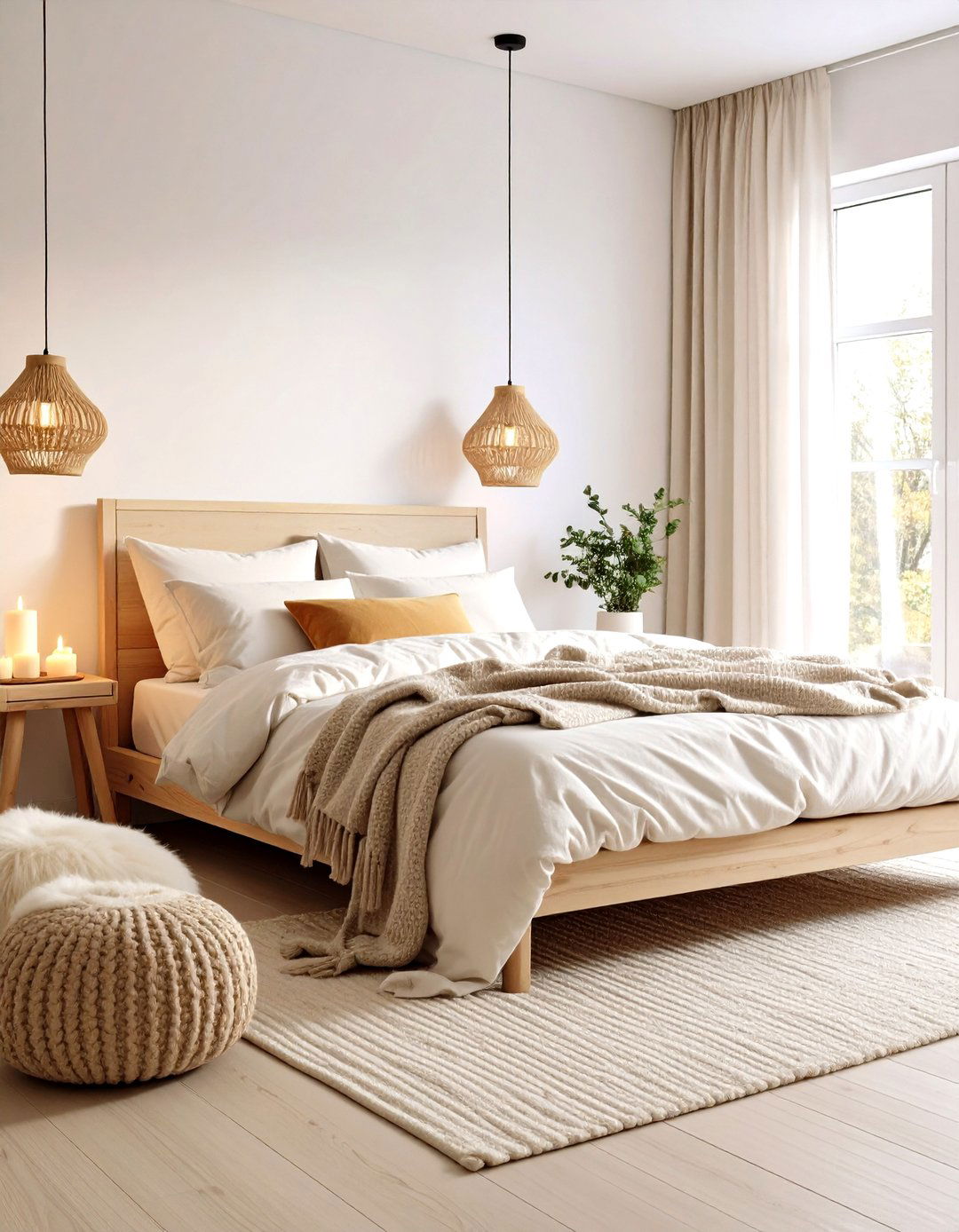
Embracing the Danish concept of hygge, this minimalist bedroom prioritizes coziness and contentment within a clean, simple framework. The Scandinavian approach emphasizes "hygge" - the concept of being warm and cozy, which becomes a key element in minimalist bedroom design. The design features light wood furniture, particularly in birch or pine, creating warmth against white or pale gray walls. Textiles play a crucial role, with wool throws, sheepskin rugs, and linen bedding adding softness and warmth. Candlelight and warm LED lighting create intimate atmospheres during darker months. Simple furniture forms emphasize functionality and craftsmanship, with visible wood joinery celebrating natural beauty. The color palette includes soft whites, warm grays, and natural wood tones, creating a sense of harmony and comfort that supports both relaxation and well-being.
17. Minimalist Bedroom Art Gallery Focus
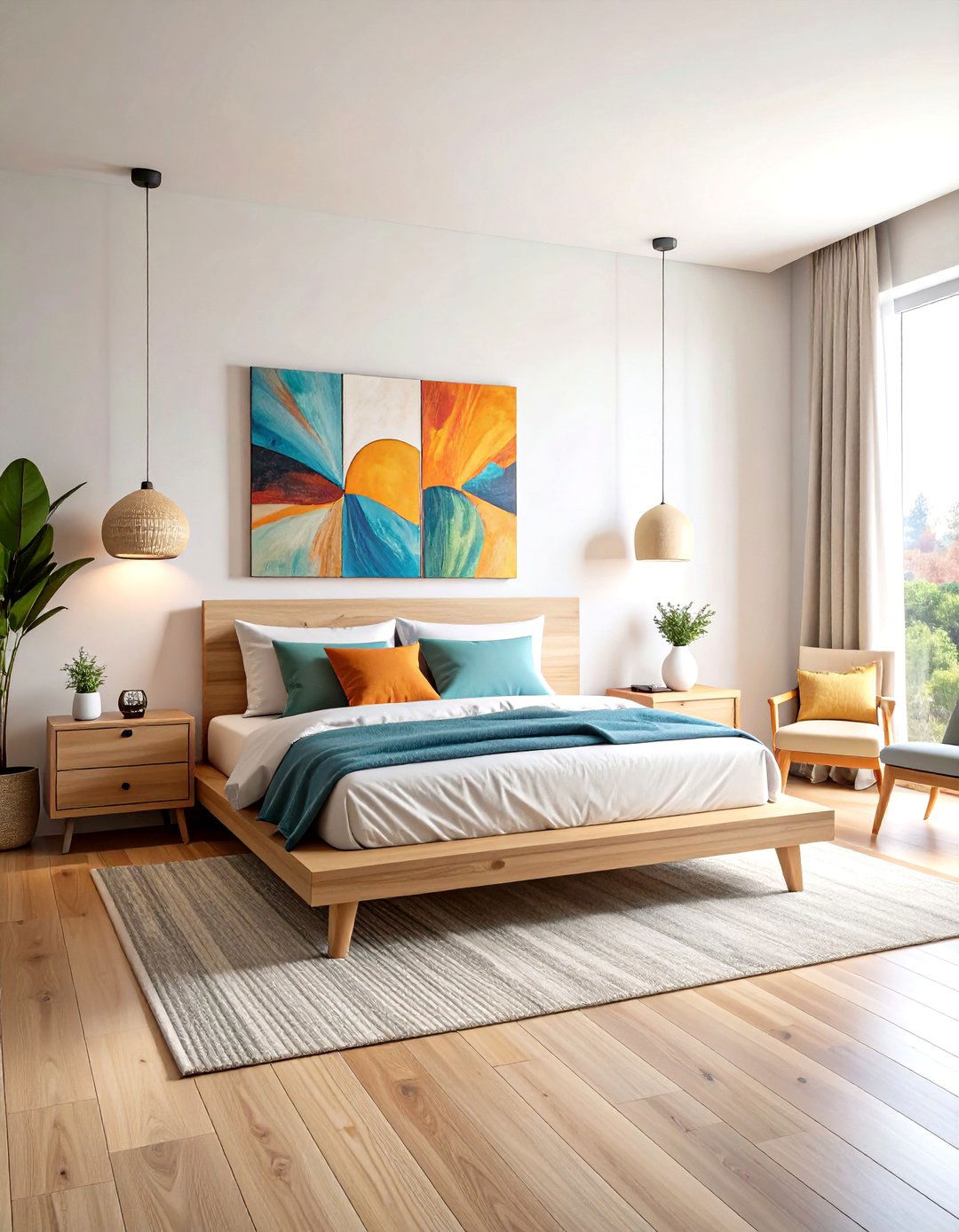
Treating the bedroom as a curated space for meaningful art, this minimalist design uses carefully selected pieces as focal points within an otherwise spare environment. The design features clean white or neutral walls that serve as gallery backdrops for one or two significant artworks. A simple platform bed in natural wood or upholstered fabric provides a quiet foundation that doesn't compete with wall art. Lighting specifically illuminates artwork through adjustable track systems or picture lights. Furniture remains minimal and low-profile, ensuring art remains the primary visual interest. The color palette stays deliberately neutral to allow artwork colors to dominate the space. This approach demonstrates how minimalism can celebrate personal expression and creativity while maintaining the clean, uncluttered aesthetic that promotes restful sleep and contemplation.
18. Minimalist Bedroom Garden Integration

Bringing nature indoors through carefully selected plants, this minimalist bedroom creates a fresh, living environment that purifies air while maintaining clean design principles. The design incorporates plants known for bedroom suitability, such as snake plants, pothos, and peace lilies, chosen for their air-purifying qualities and low light tolerance. Plant containers follow minimalist principles, featuring simple ceramic or concrete planters in neutral colors. A living wall or vertical garden system might serve as a natural headboard alternative. The color palette emphasizes greens and earth tones, creating harmony between living and designed elements. Natural materials like bamboo and untreated wood support the garden theme. Humidity-loving plants thrive in bedroom environments, while strategic placement ensures plants enhance rather than clutter the space. This approach proves that minimalism and nature can create healing, restorative environments.
19. Monastic Minimalist Bedroom Simplicity
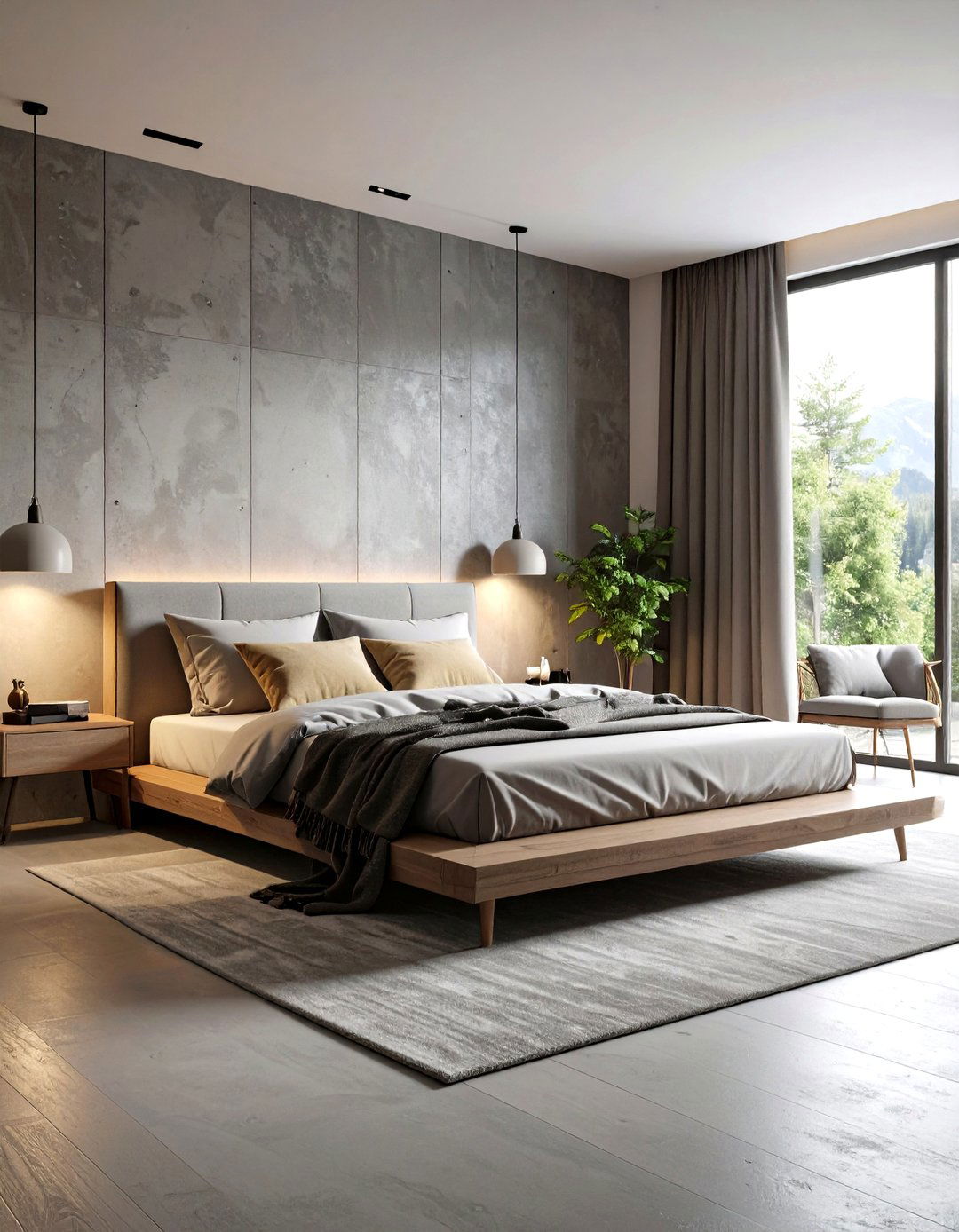
Drawing inspiration from monastic traditions, this minimalist bedroom emphasizes spiritual simplicity and contemplative calm. The design embodies "wabi-sabi" principles, emphasizing simple design and the elimination of excess to create visually calming spaces. The space features essential elements only: a simple platform bed, basic lighting, and minimal storage solutions. Materials emphasize natural, unfinished surfaces like raw wood, stone, and unbleached cotton. The color palette remains strictly neutral, focusing on whites, natural wood tones, and stone grays. Furniture forms follow traditional simplicity, with clean lines and honest construction methods. Technology remains completely hidden or absent, creating an environment for rest and reflection. This approach strips away all non-essential elements, creating a profound sense of peace and clarity that supports deep rest and mindfulness.
20. Luxury Minimalist Bedroom Sophistication
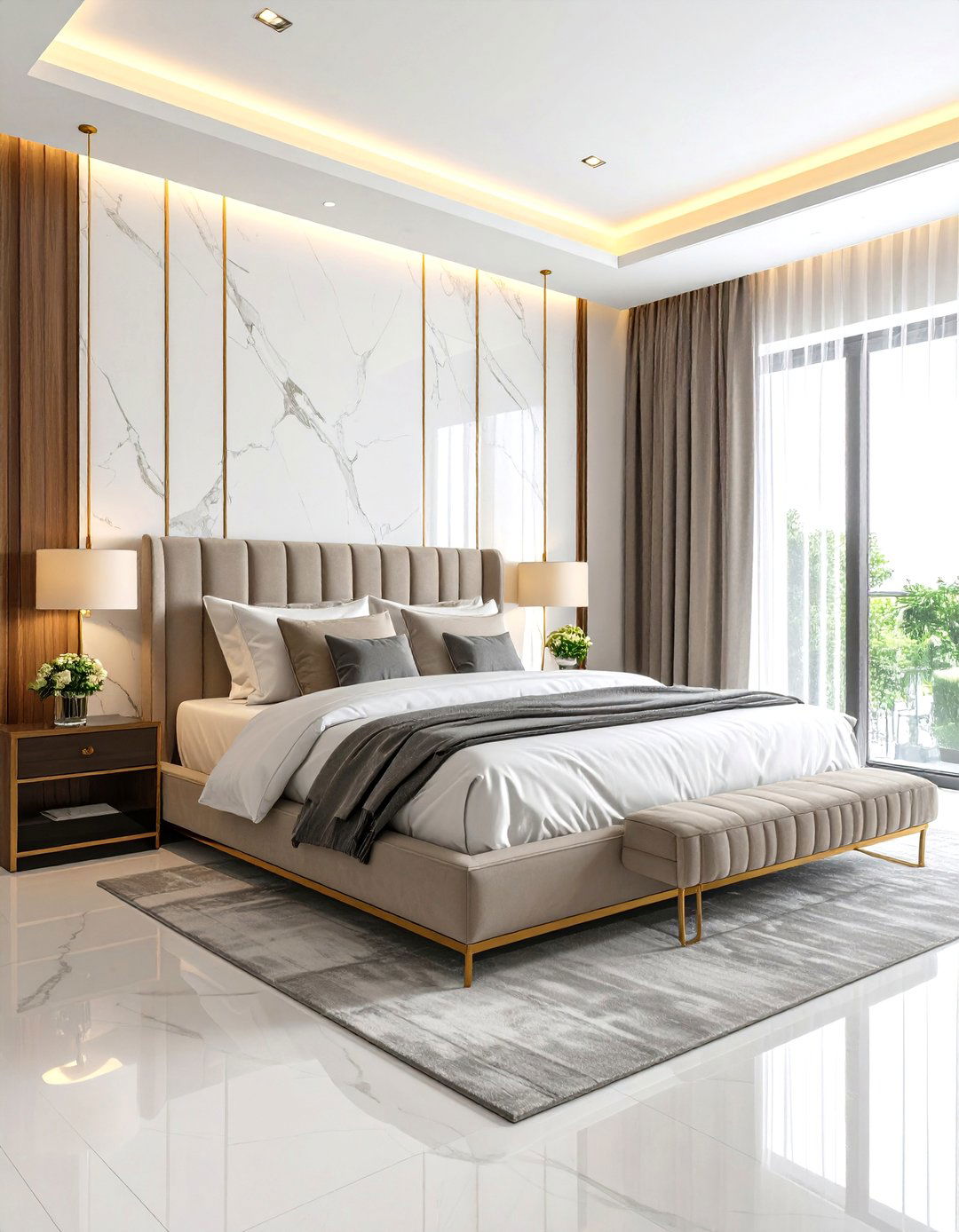
Proving that minimalism can embrace luxury, this bedroom combines high-end materials with clean, sophisticated design principles. The design creates a five-star hotel experience at home through sumptuous bedding, opulent lighting fixtures, and high-end materials like marble and silk. The centerpiece features a custom platform bed with an upholstered headboard in premium fabrics like cashmere or silk. Egyptian cotton bedding and luxury down comforters provide unparalleled comfort within a visually simple framework. High-end materials such as marble accent walls, hardwood floors, and metal details in brass or chrome create richness without clutter. Lighting fixtures showcase exceptional design and craftsmanship while maintaining clean forms. Storage solutions utilize premium materials and hidden hardware, maintaining seamless surfaces. This approach demonstrates that minimalism and luxury can coexist, creating environments that feel both serene and indulgent.
Conclusion:
These minimalist bedroom ideas for 2025 demonstrate that simplicity doesn't mean sacrificing comfort, personality, or functionality. From Japandi fusion styles to sustainable materials, each approach offers a pathway to creating serene sleeping environments that support both rest and well-being. The key lies in thoughtful curation—choosing quality over quantity, embracing natural materials, and allowing space for personal expression within clean, uncluttered frameworks. Whether drawn to warm neutrals, technological integration, or nature-inspired elements, these designs prove that minimalist bedrooms can adapt to diverse lifestyles while maintaining their fundamental promise: spaces that promote peace, clarity, and restorative sleep in our increasingly complex world.



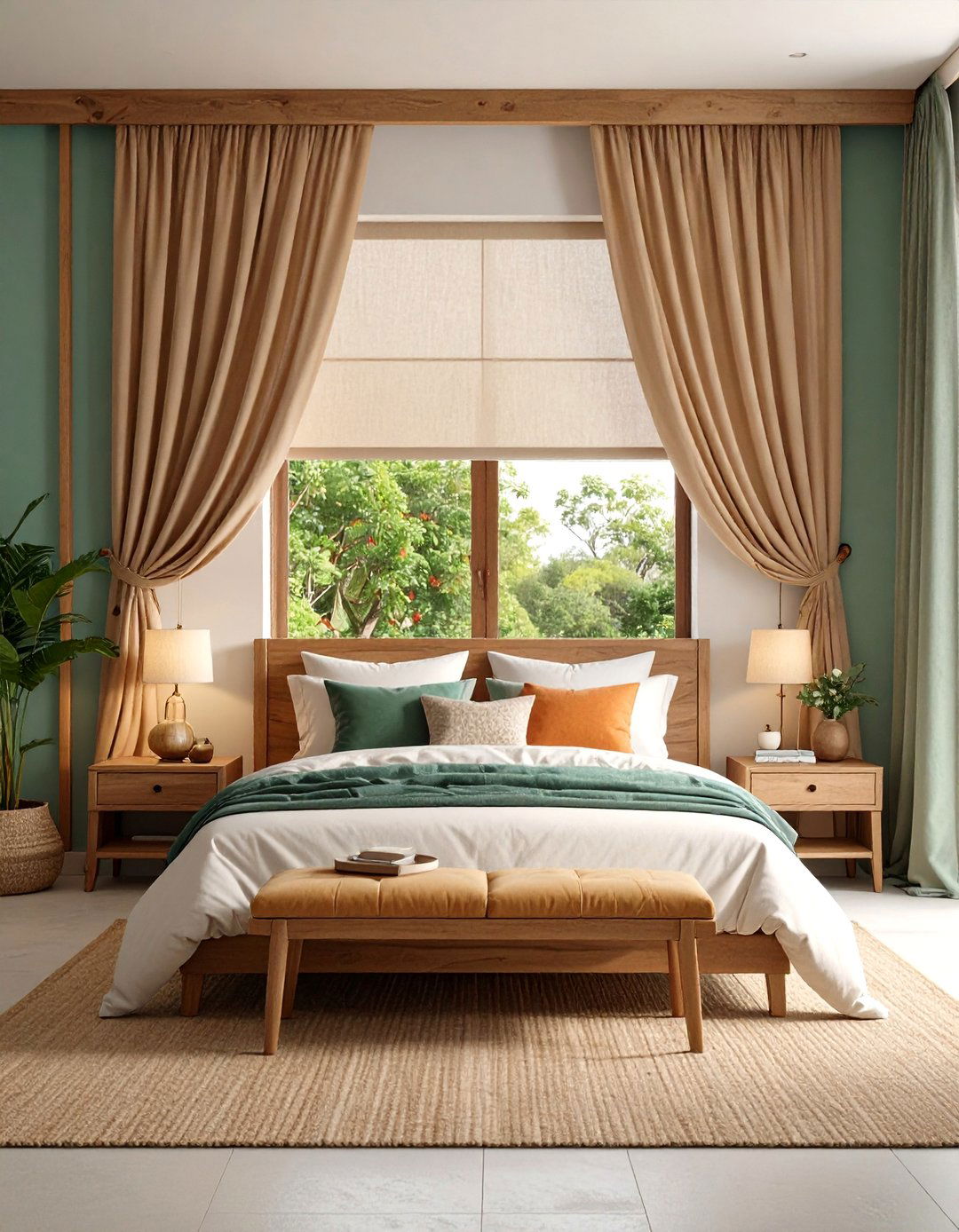
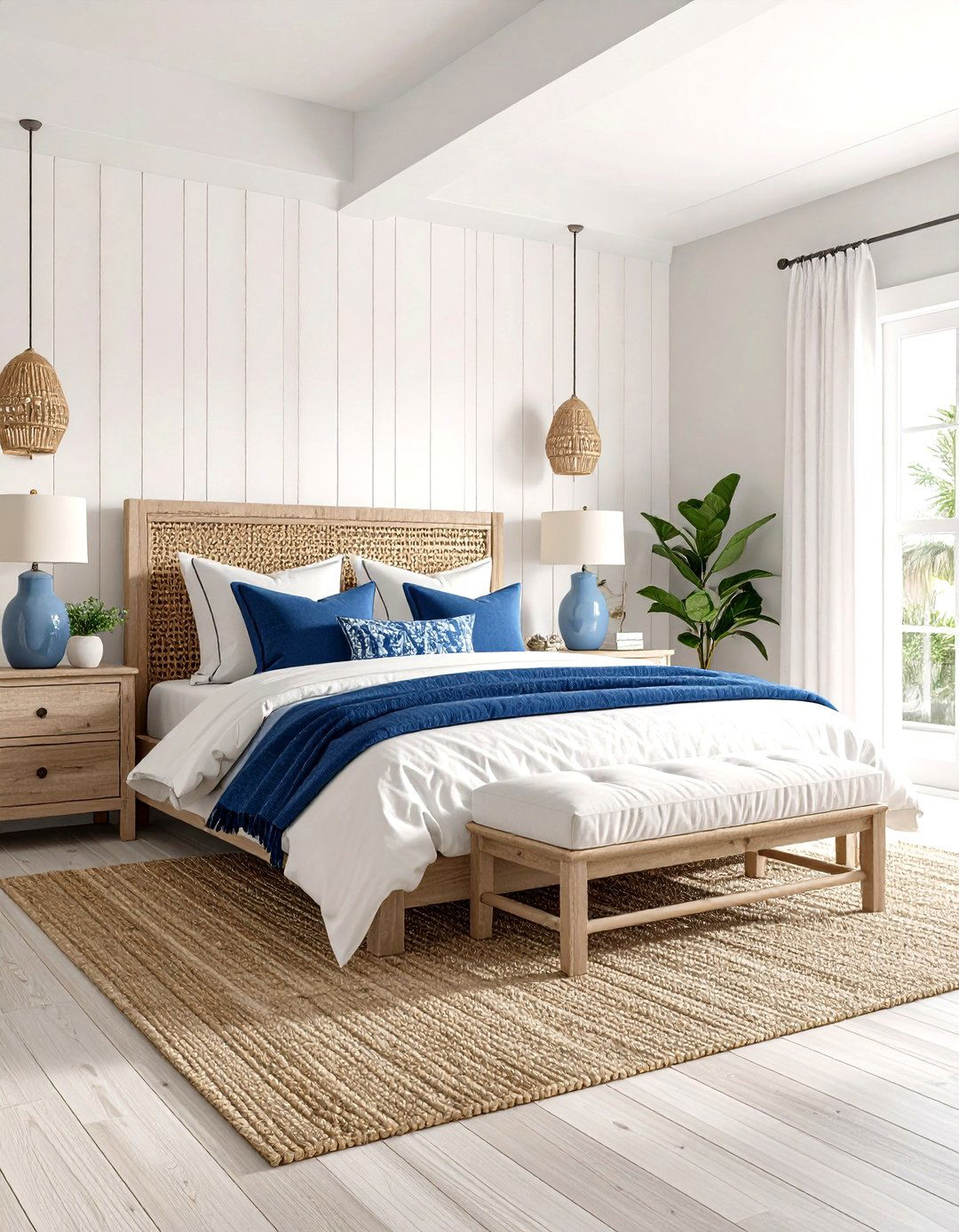
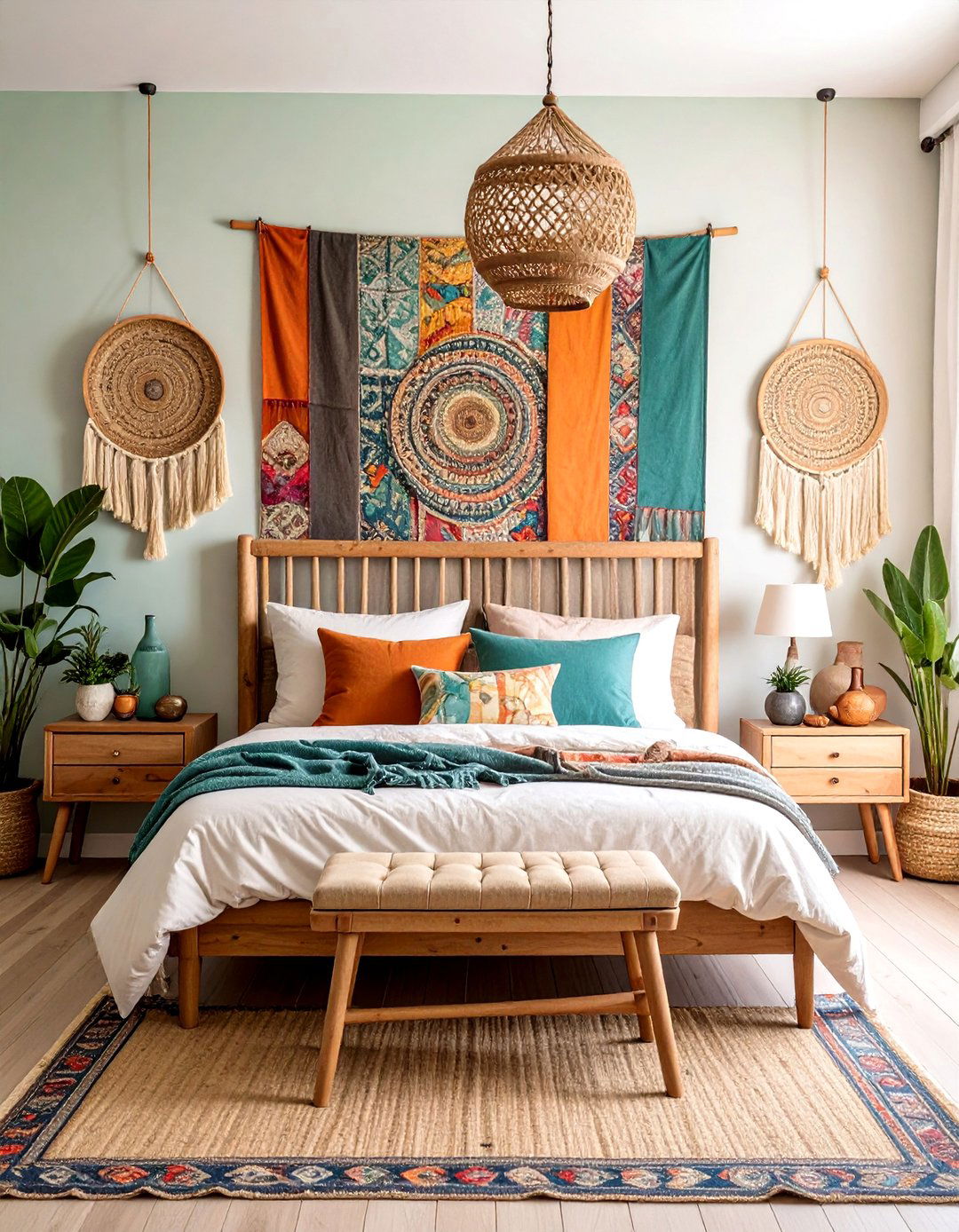
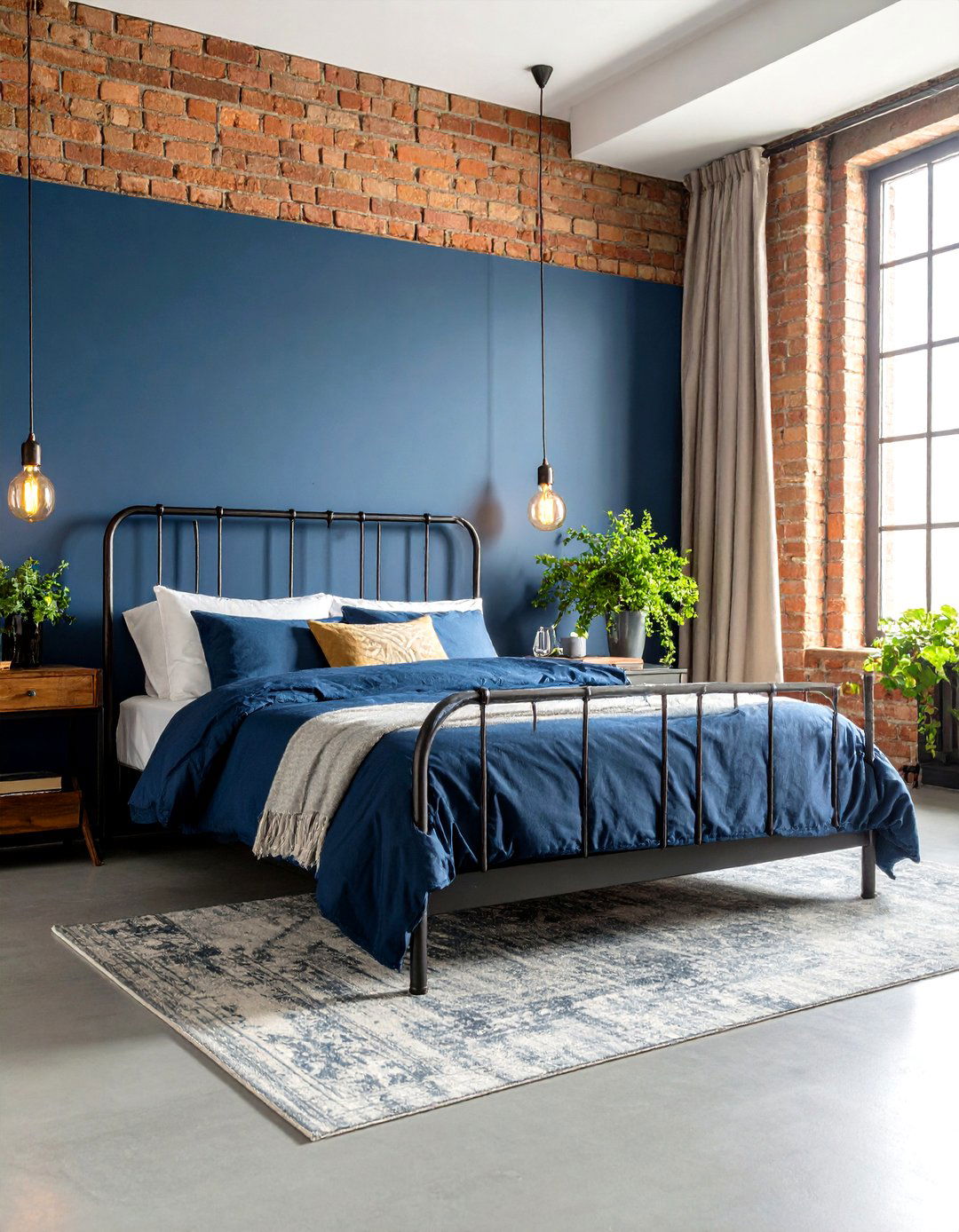
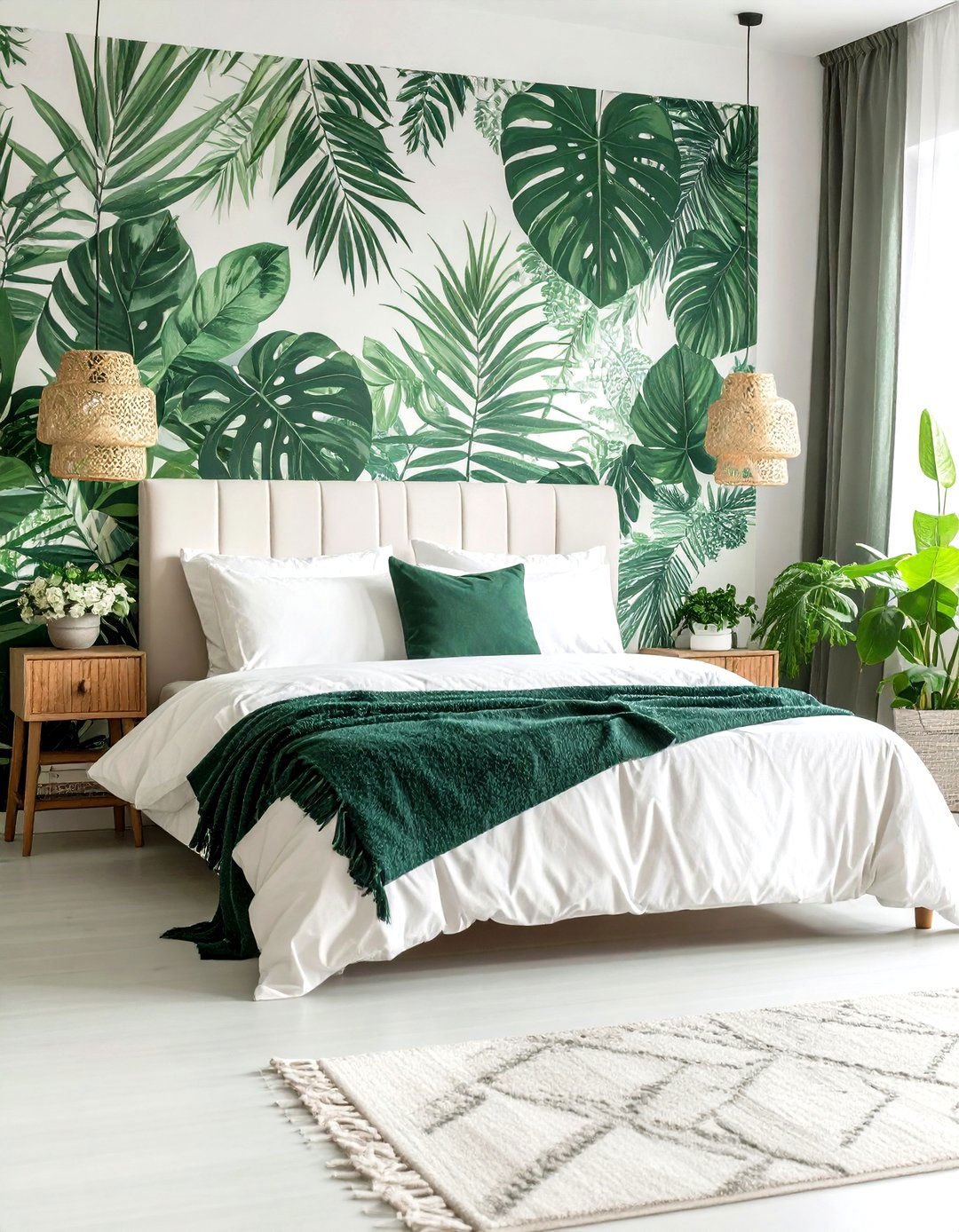
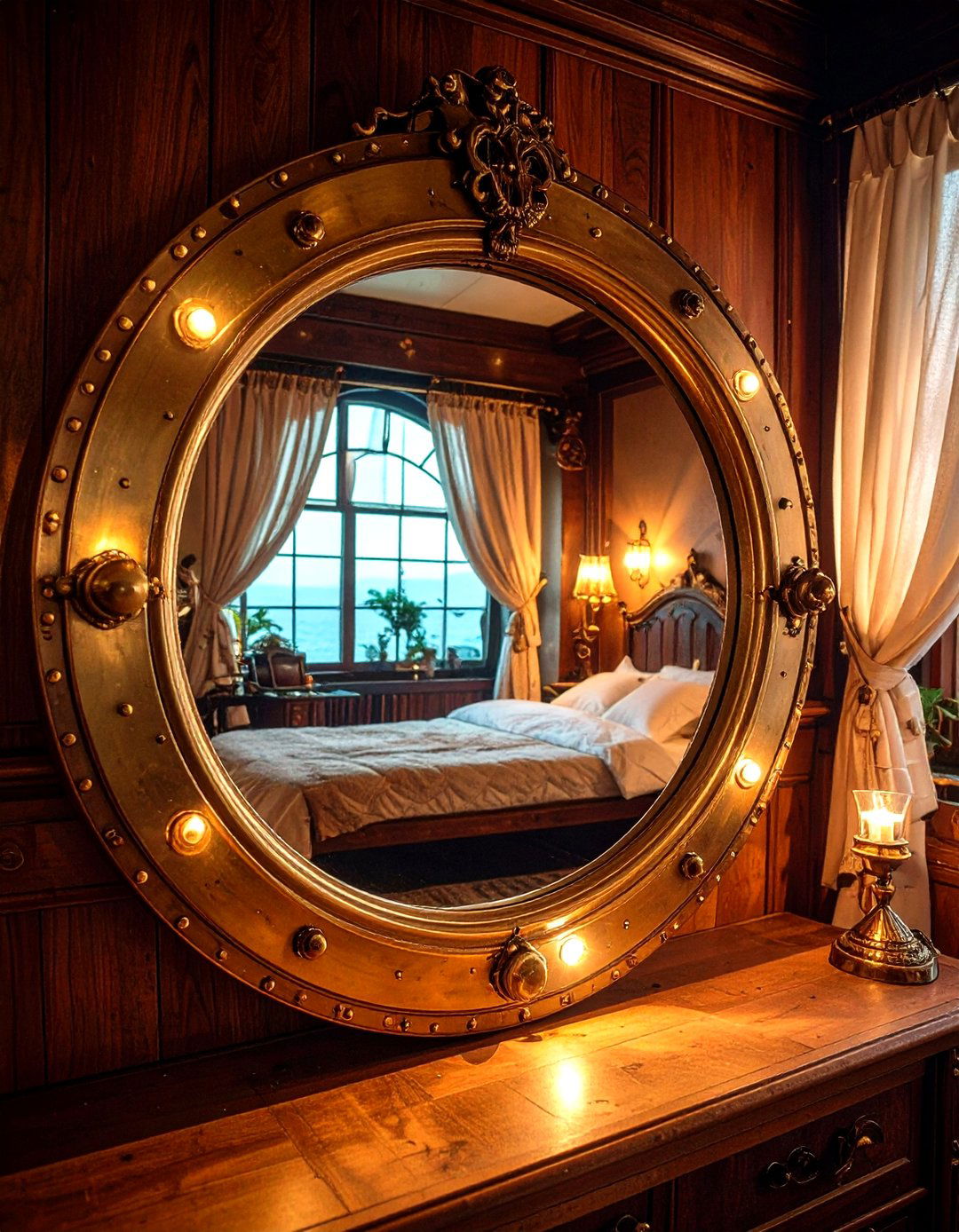
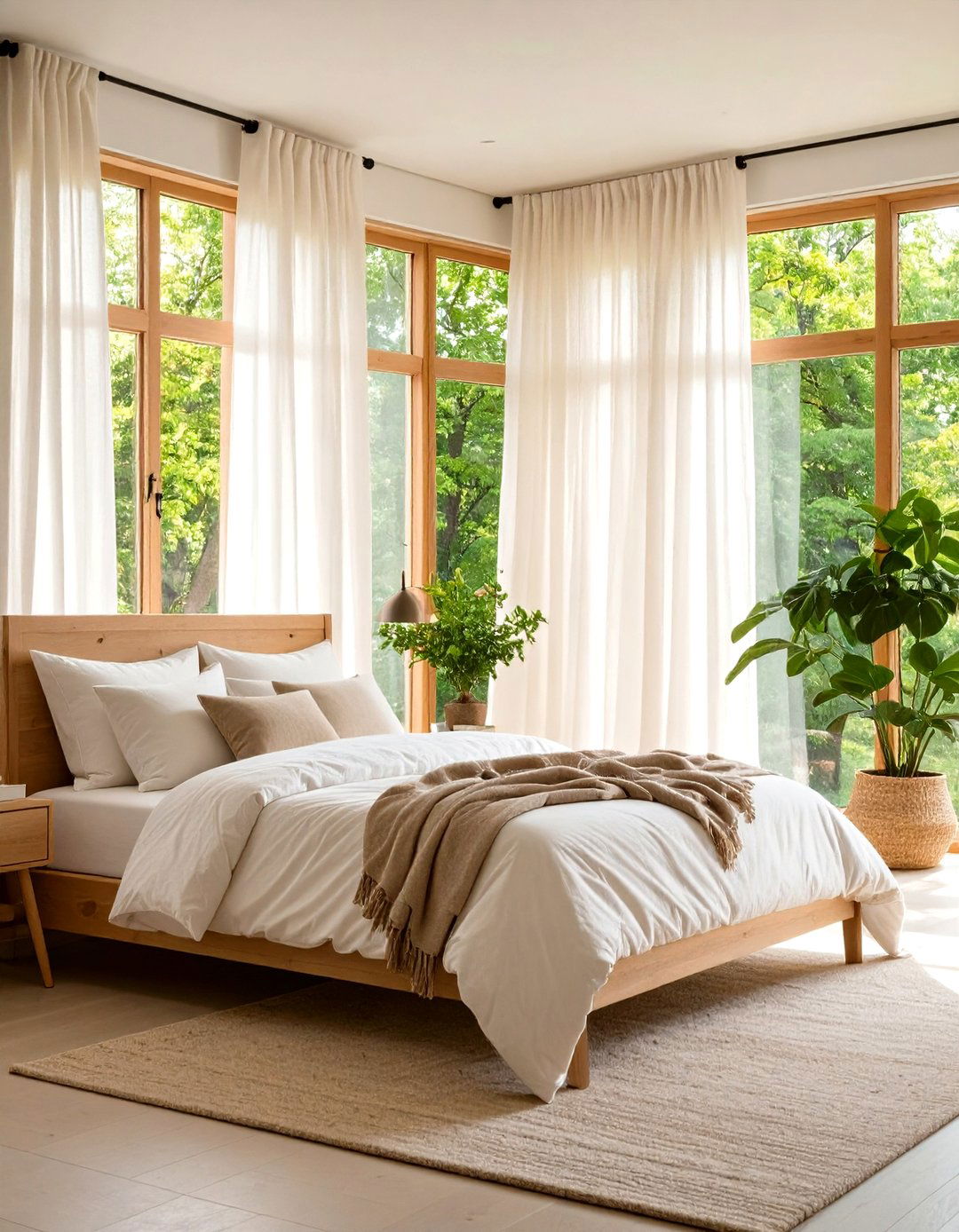
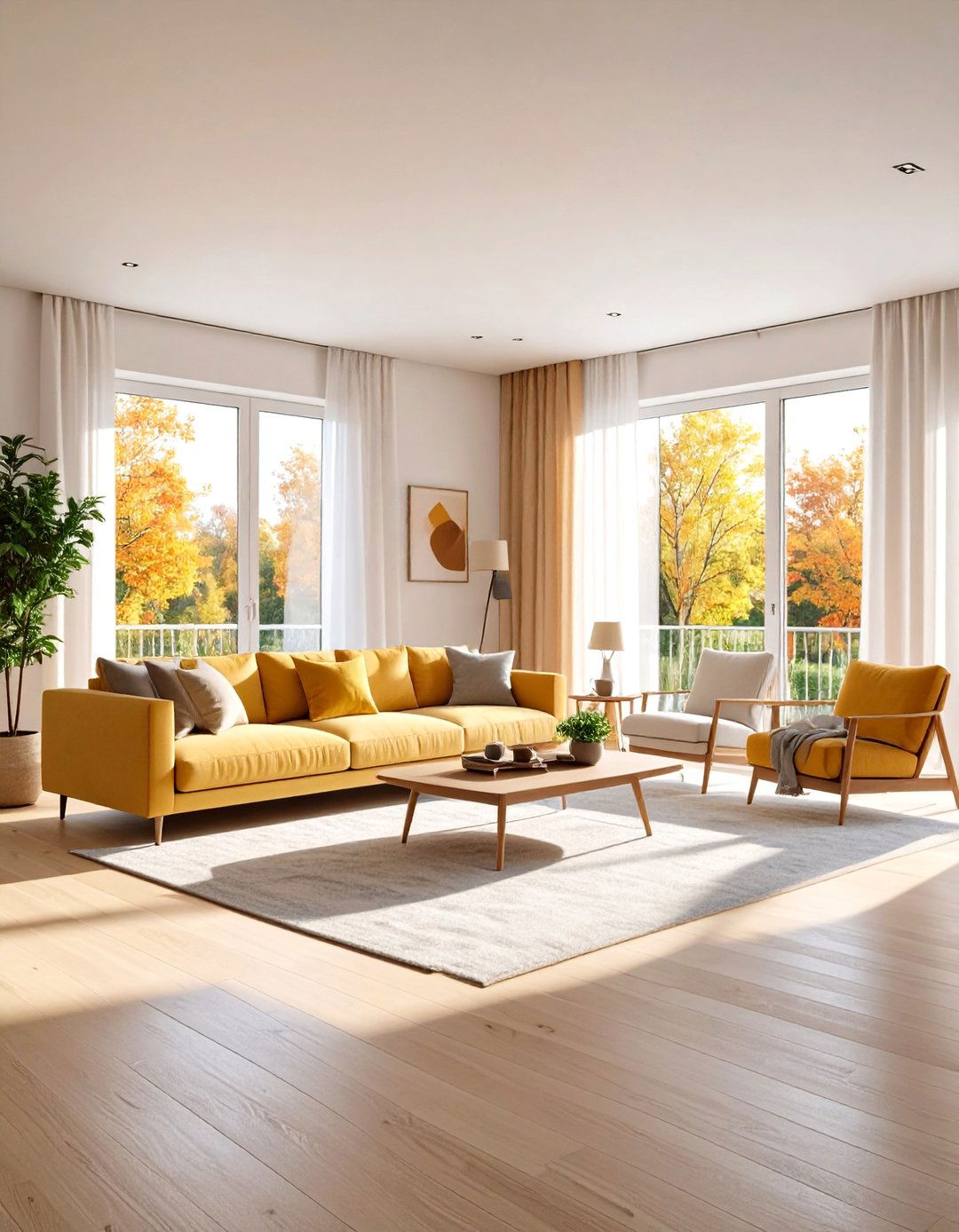
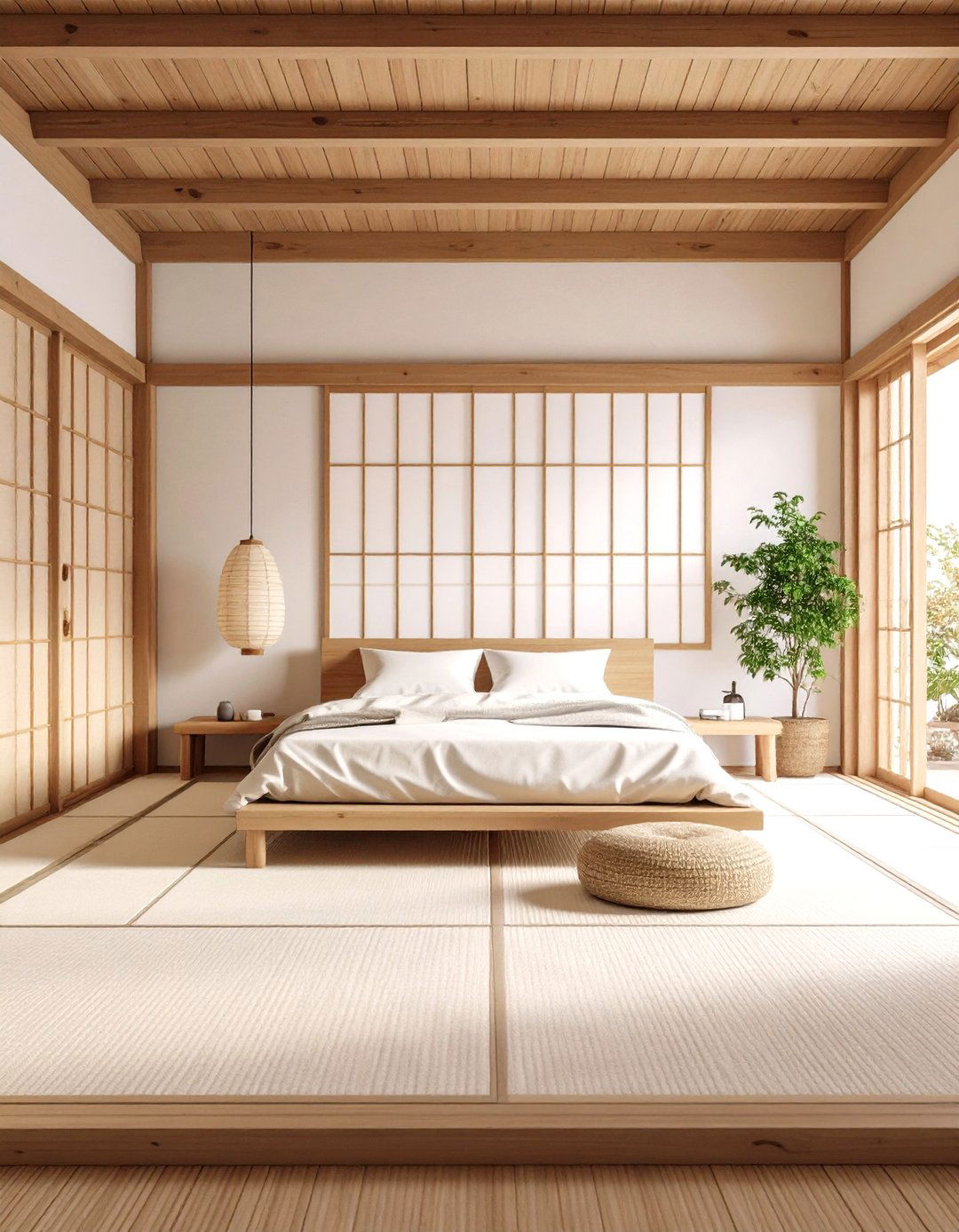
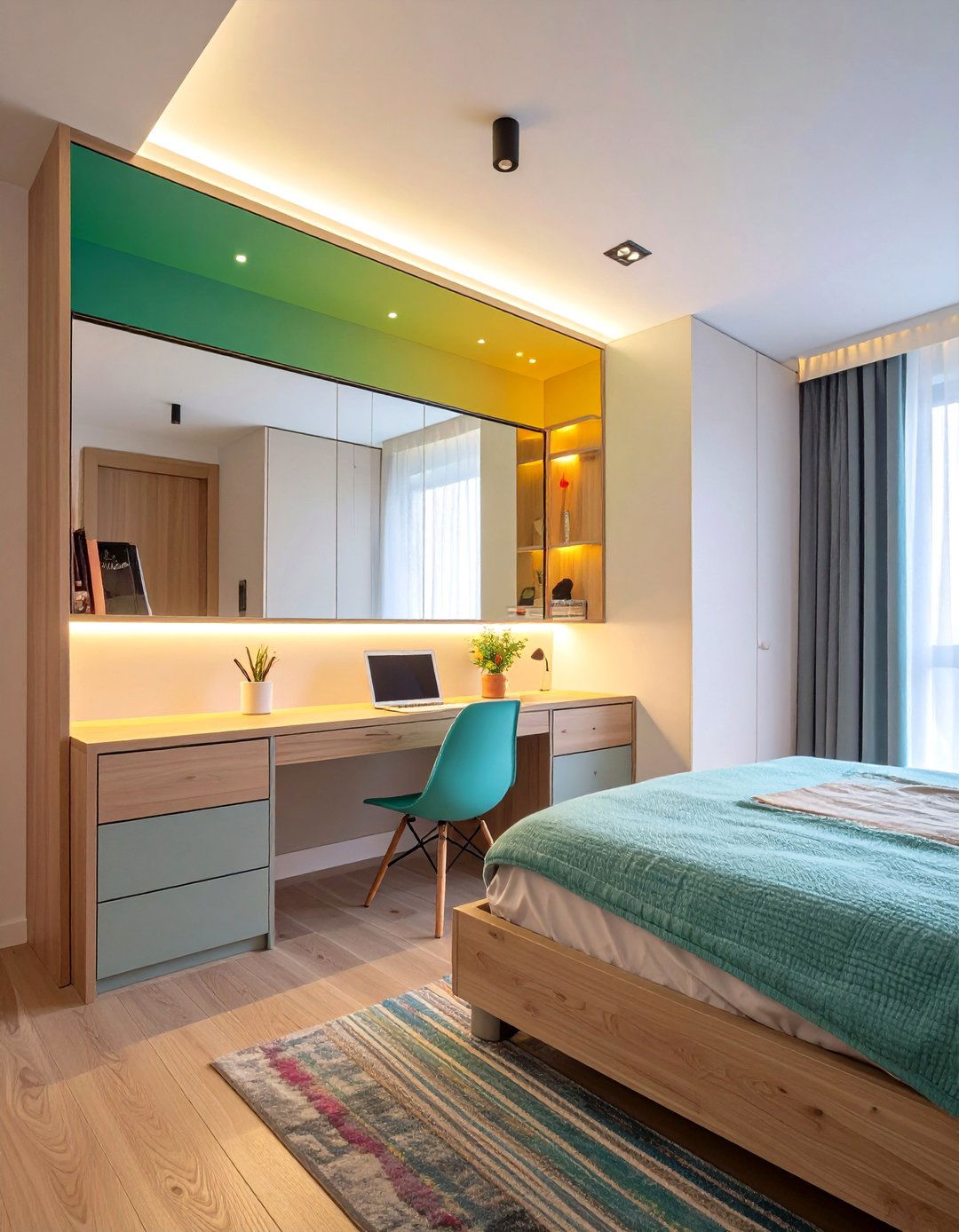
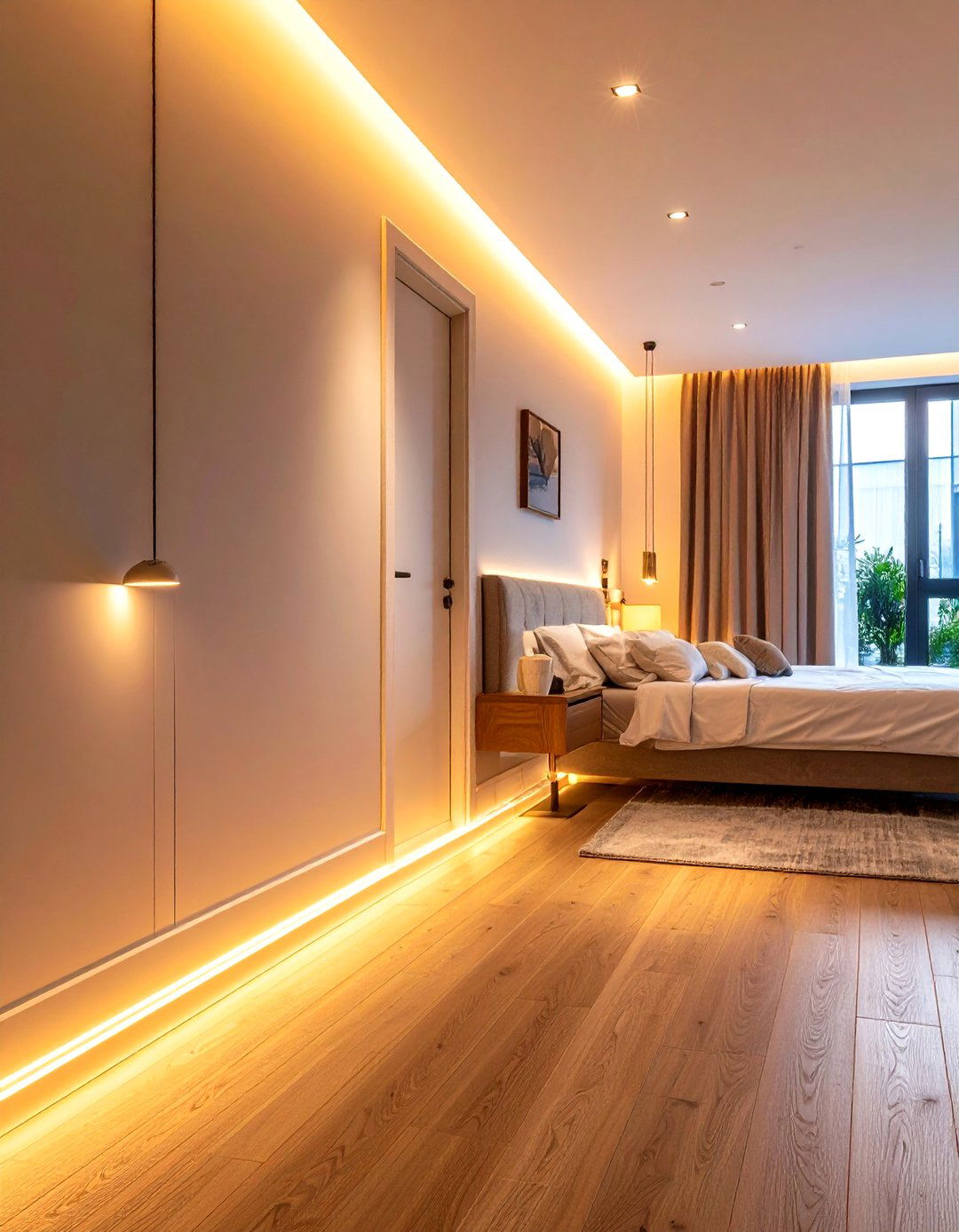
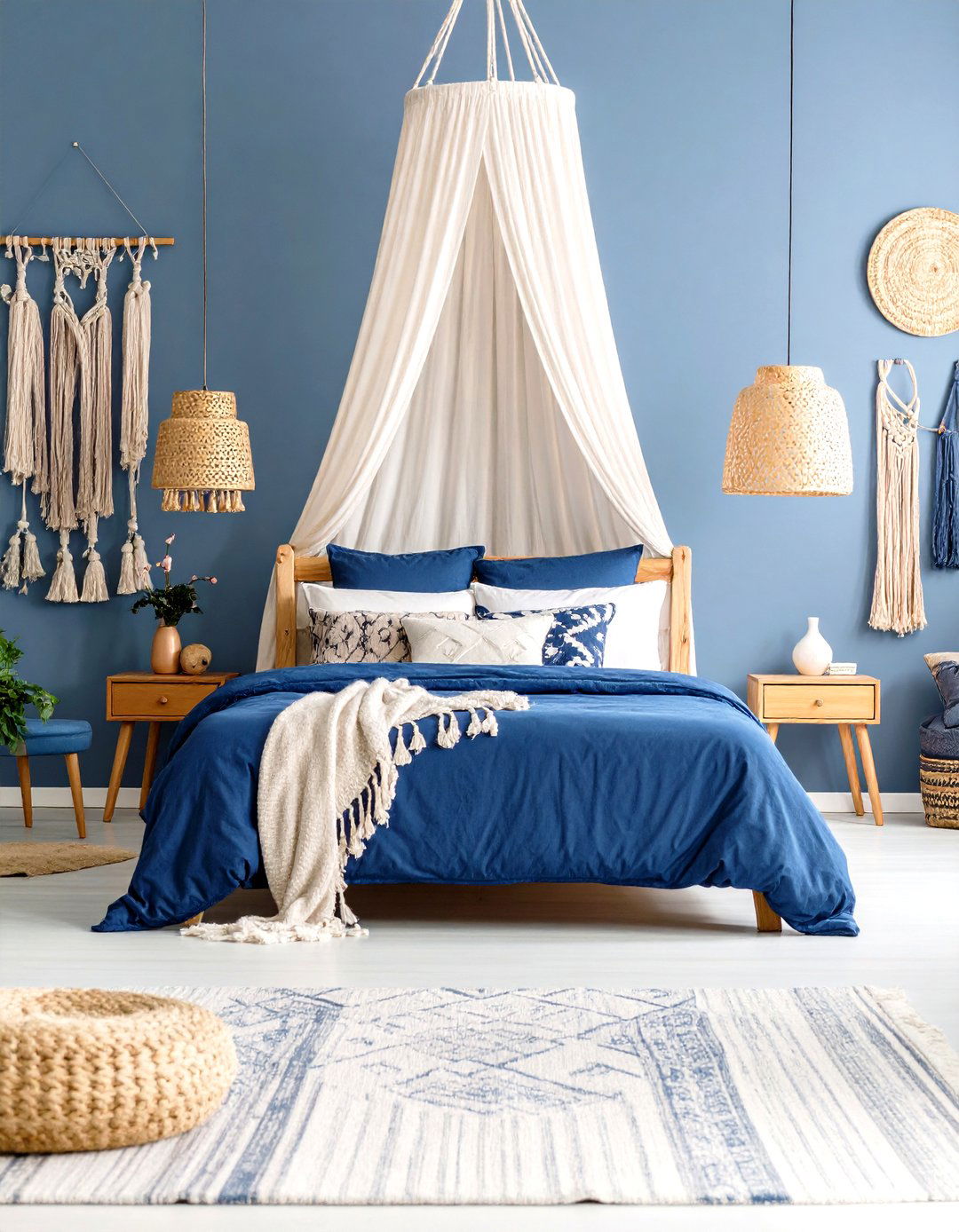
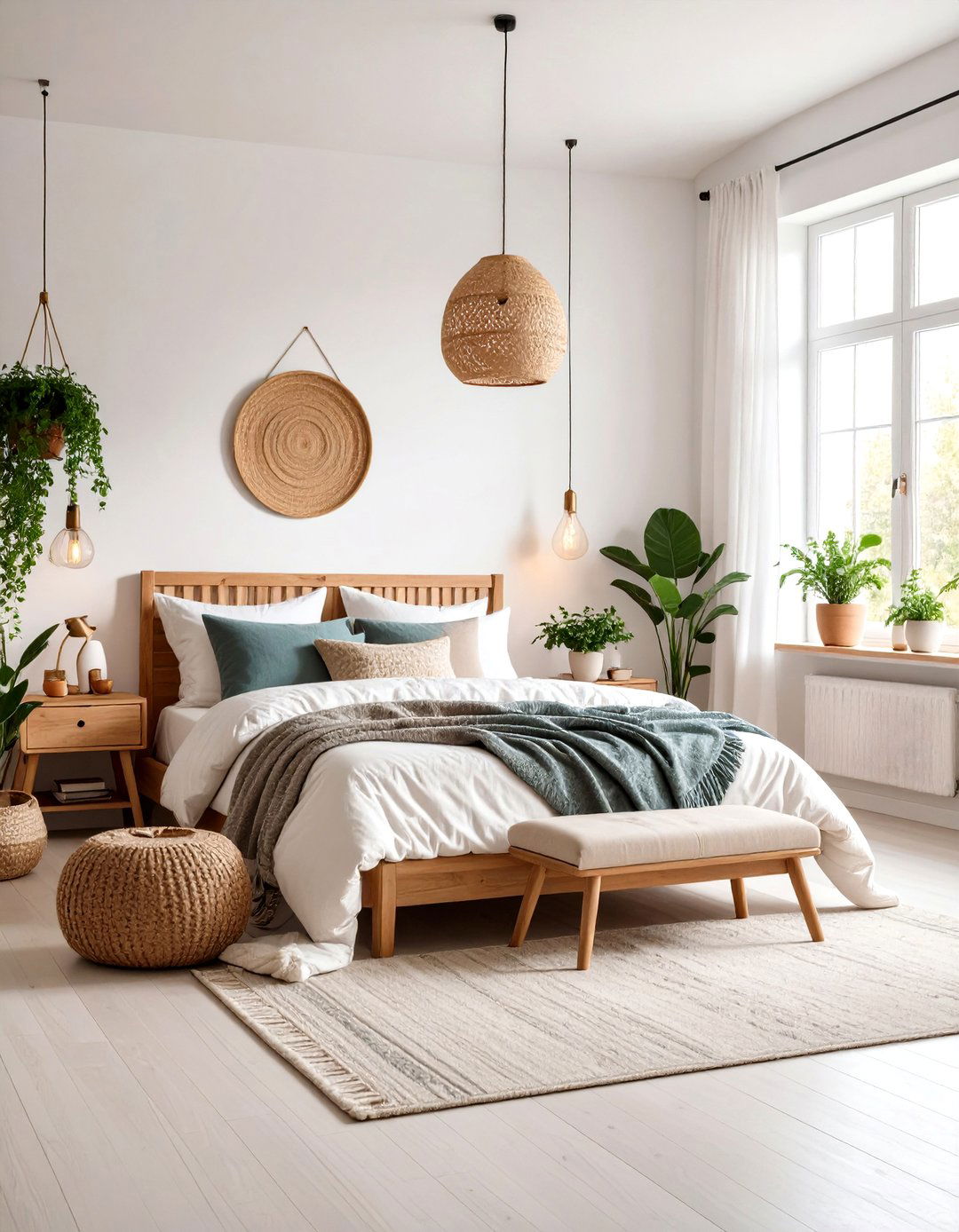

Leave a Reply